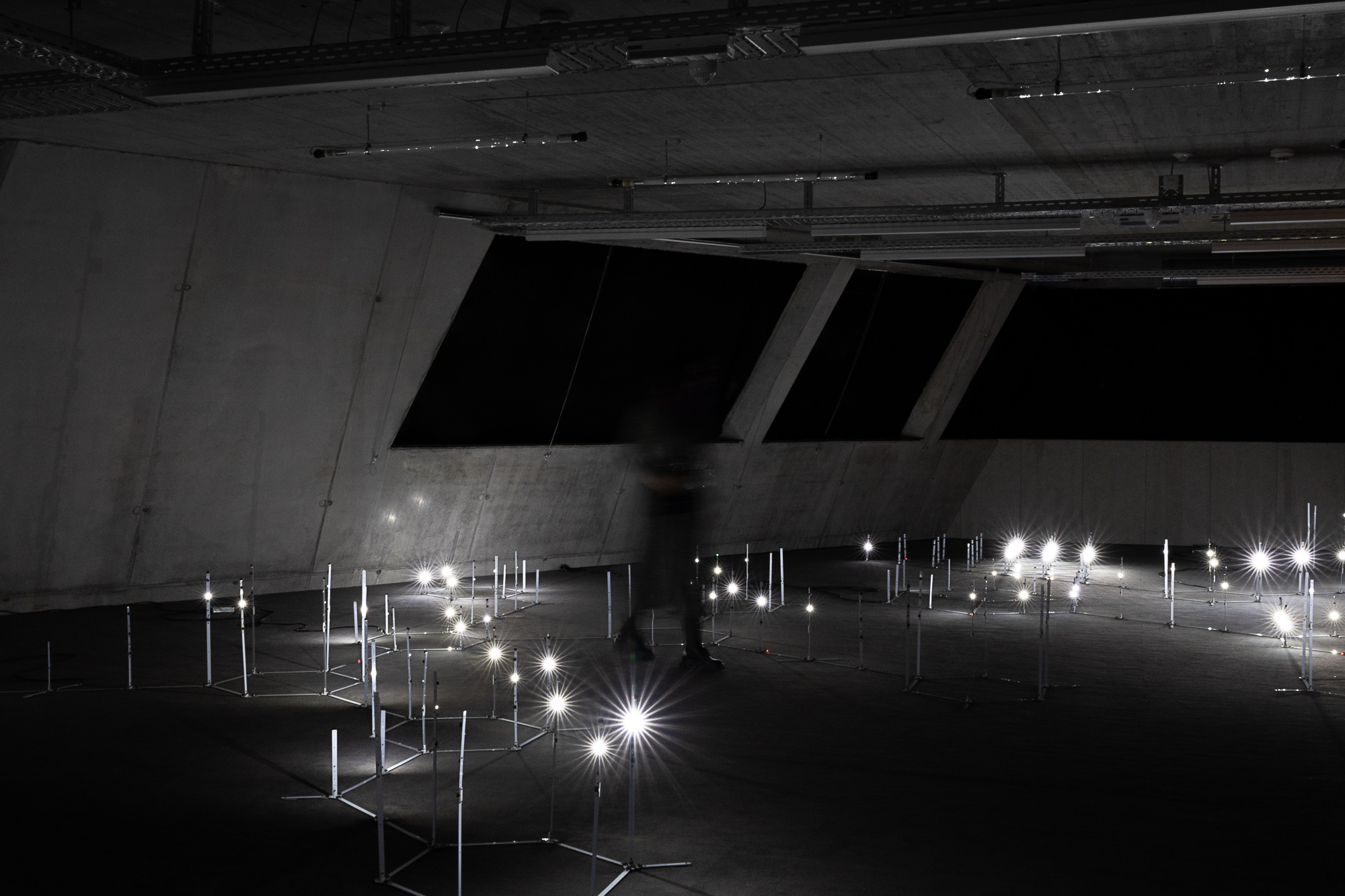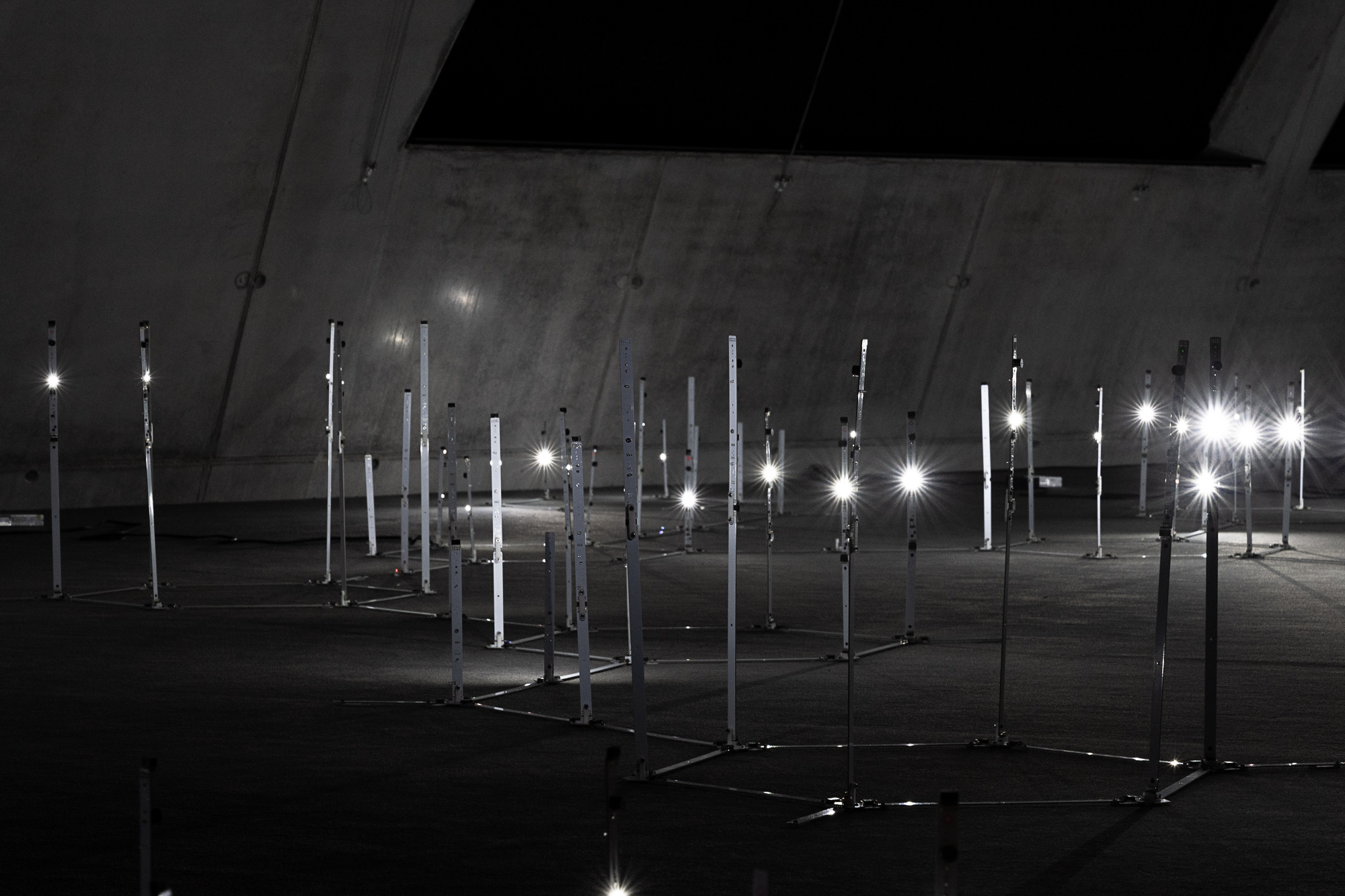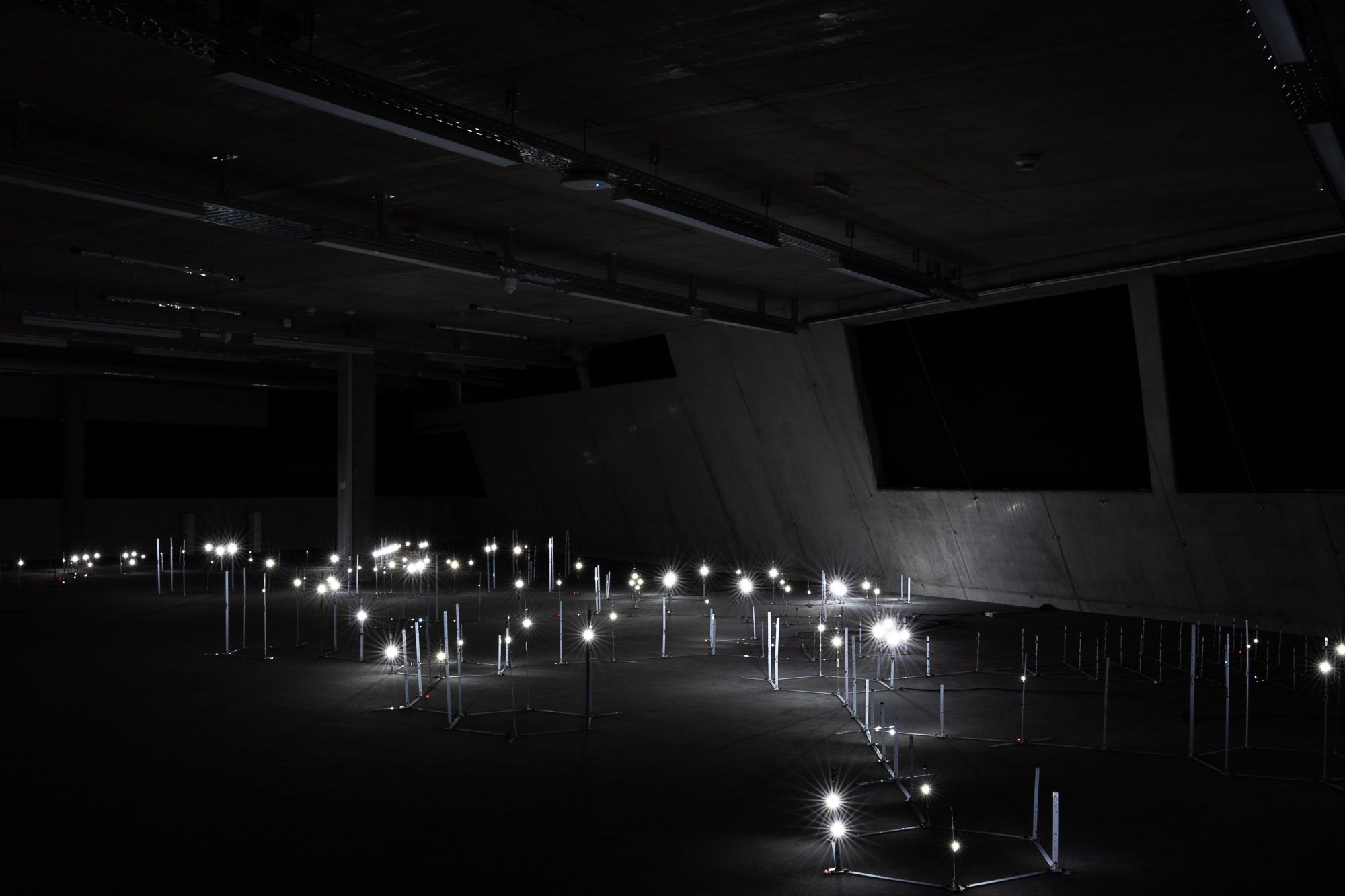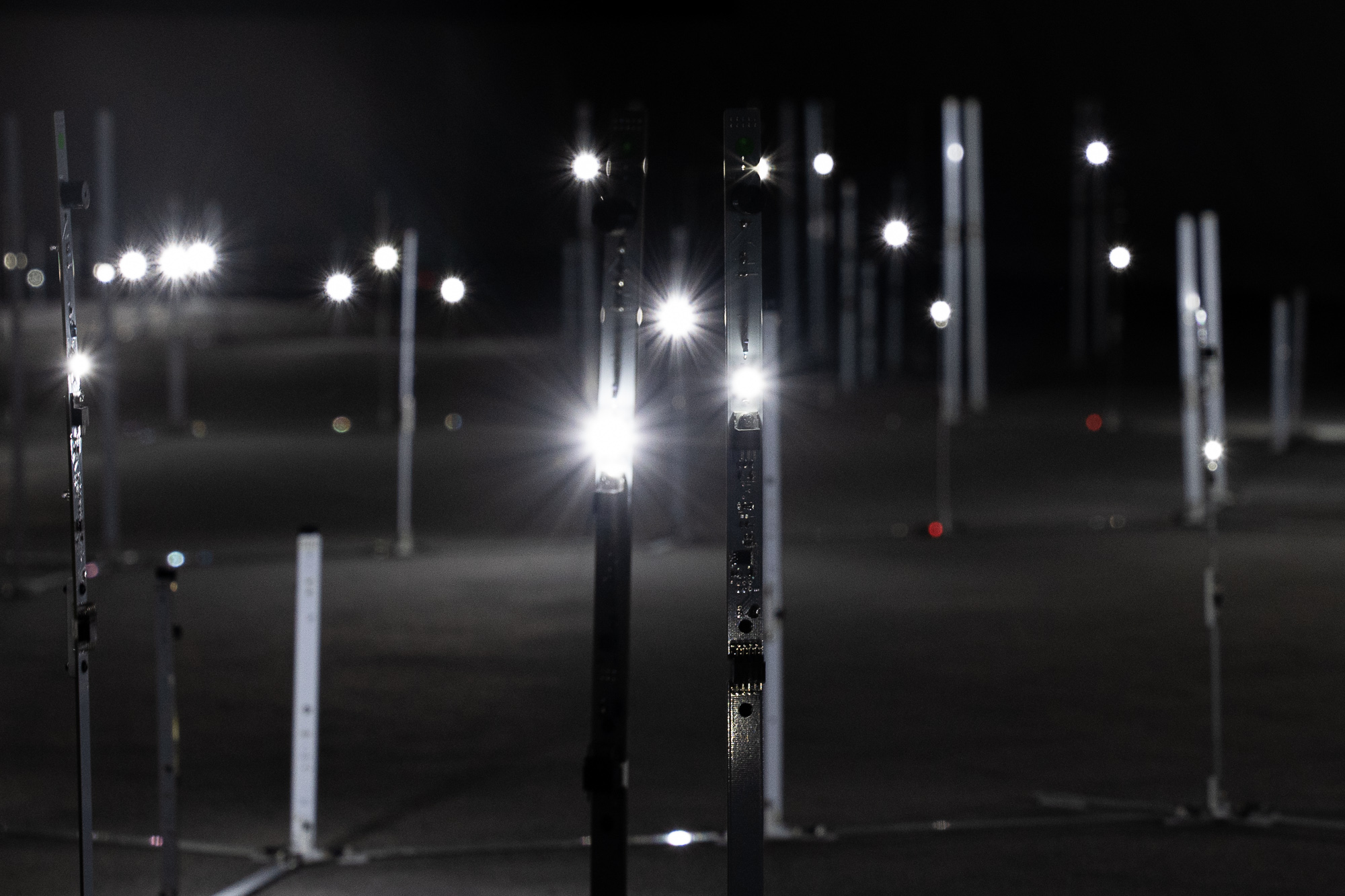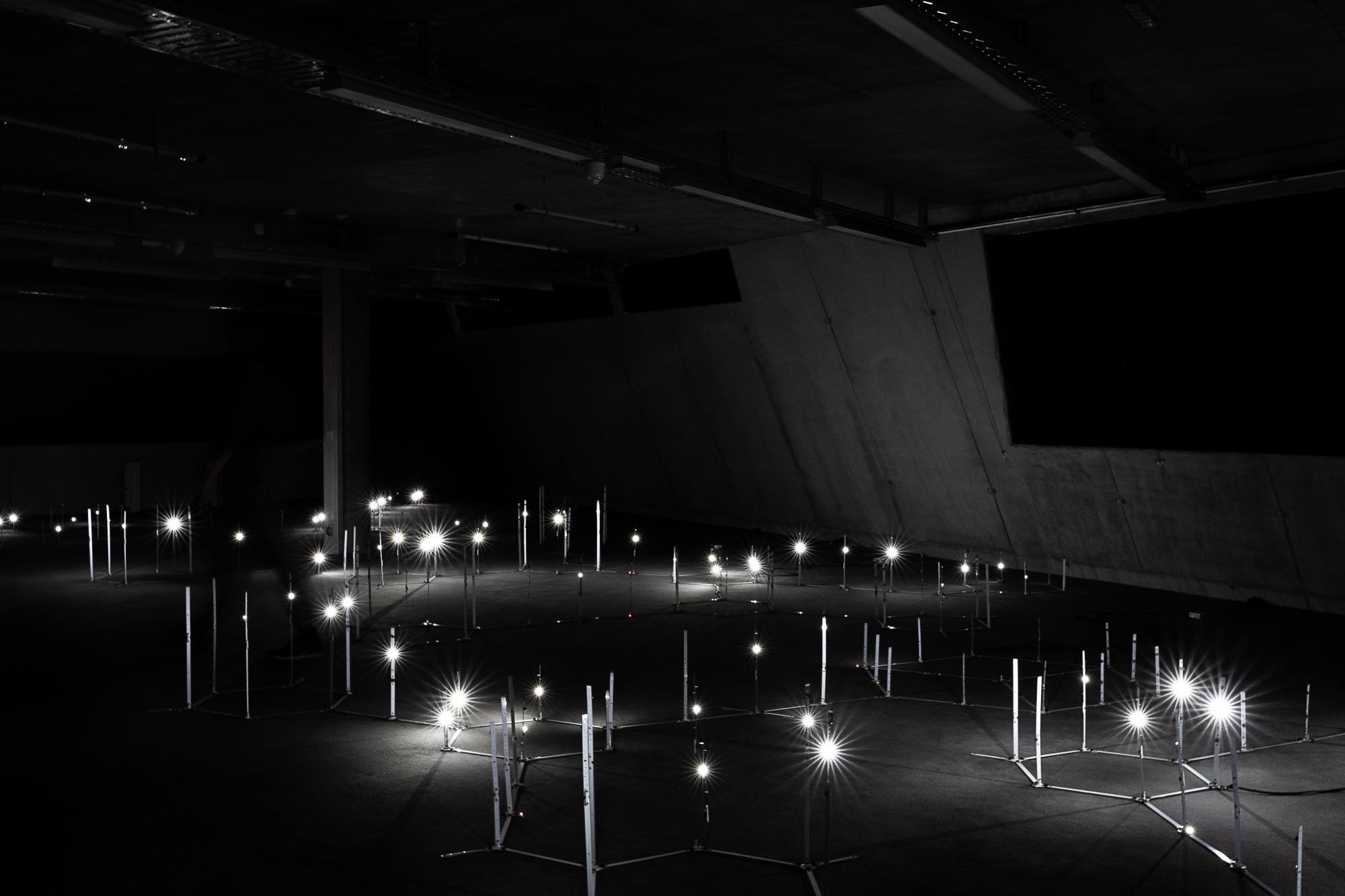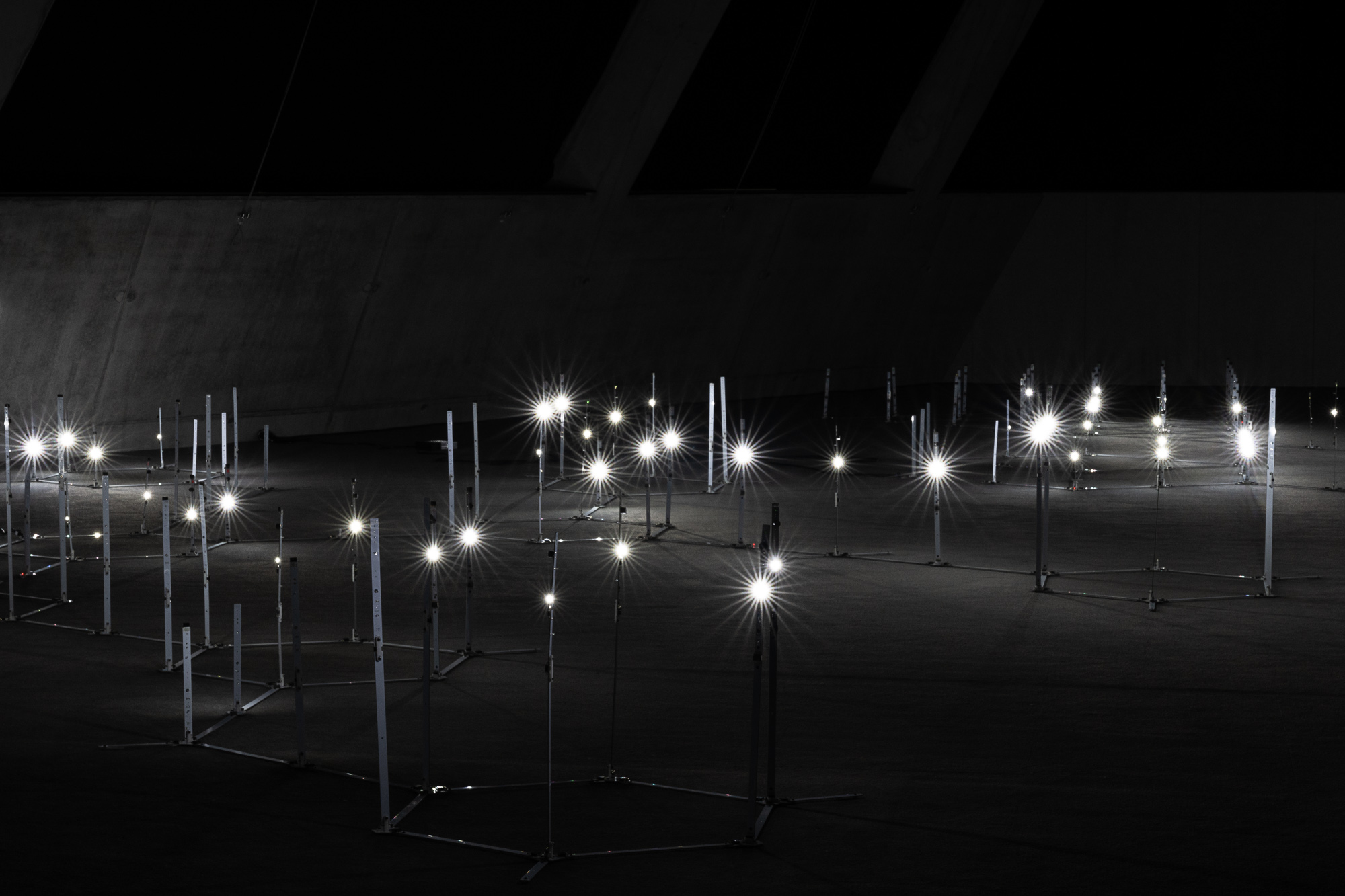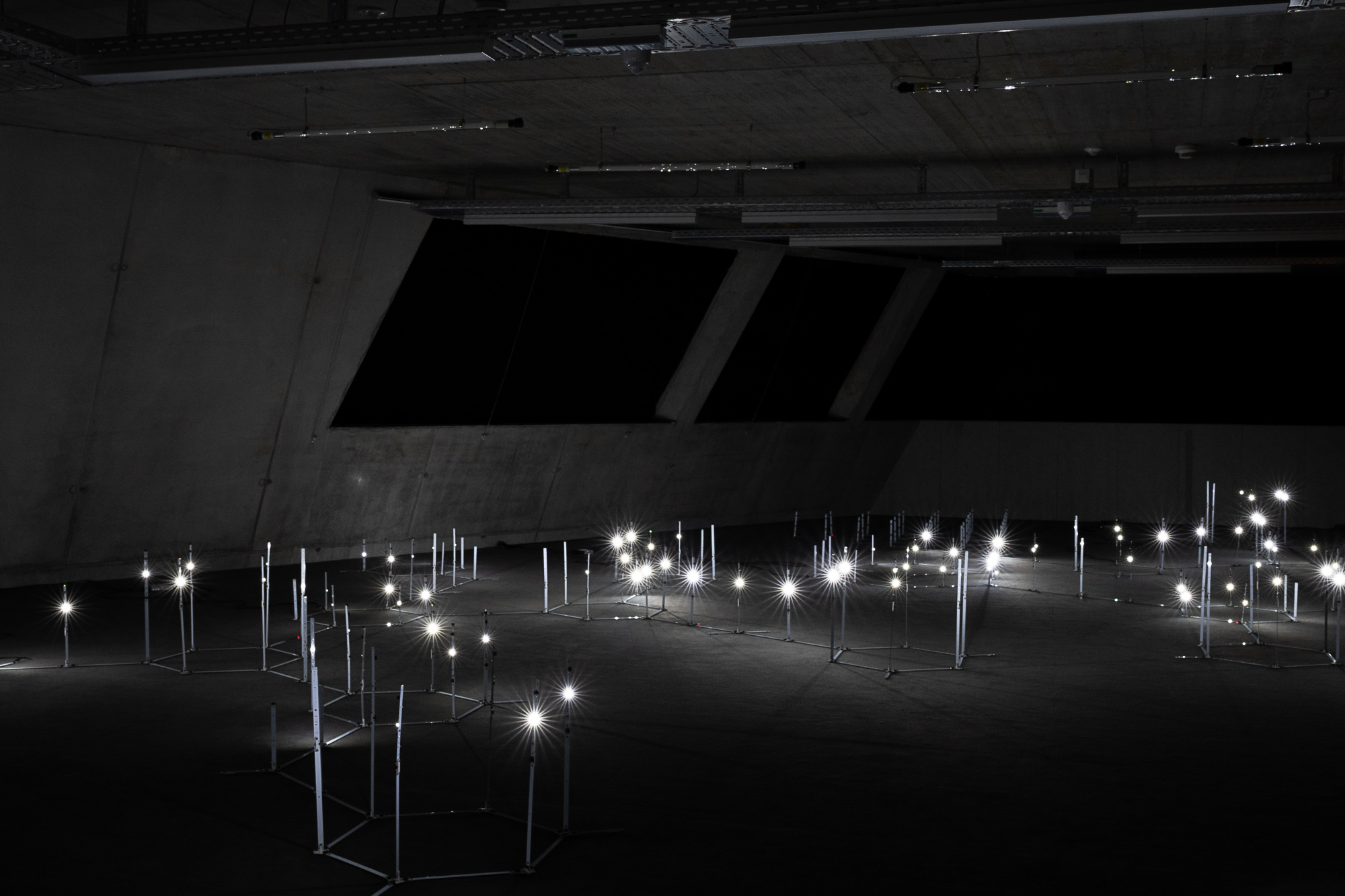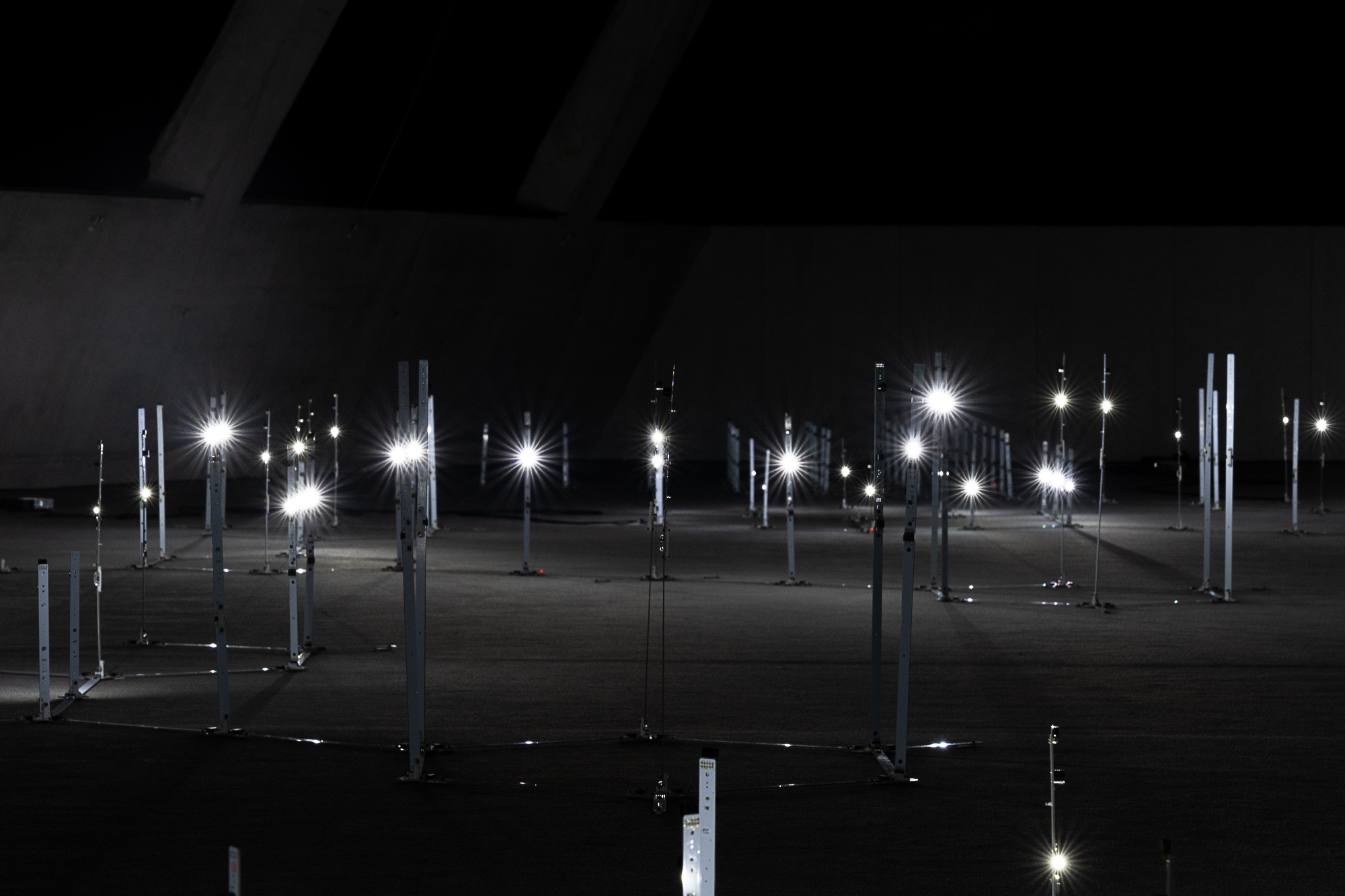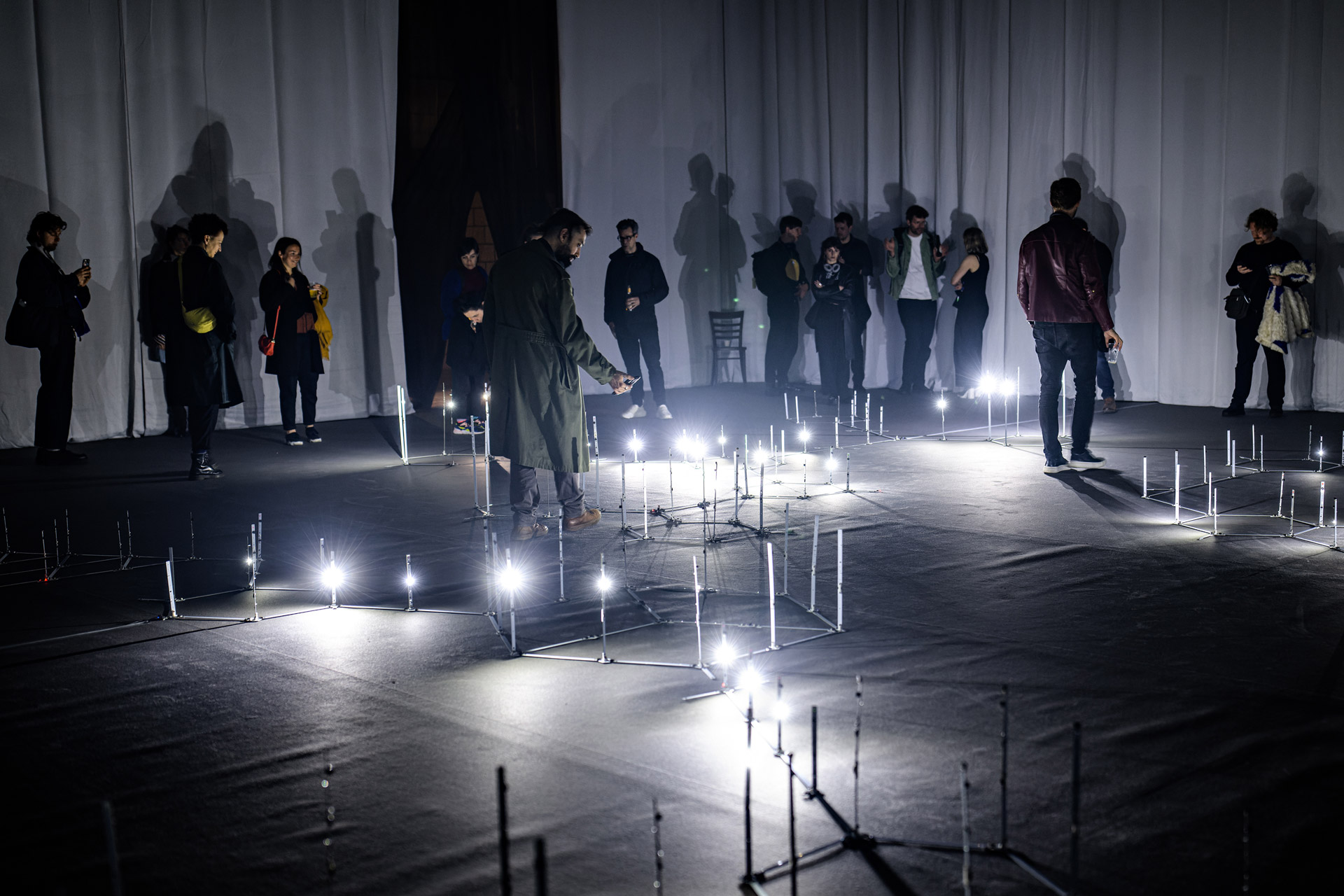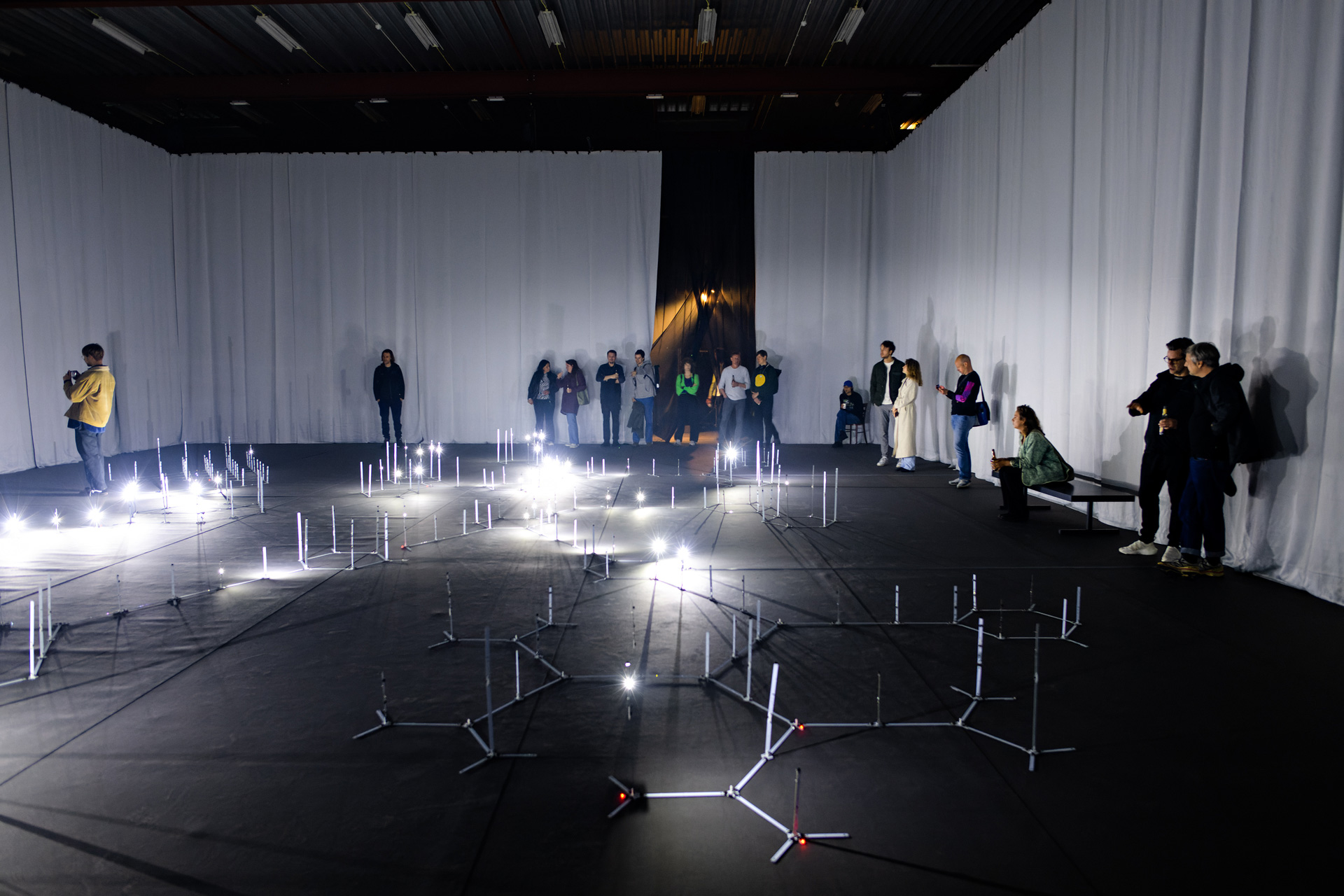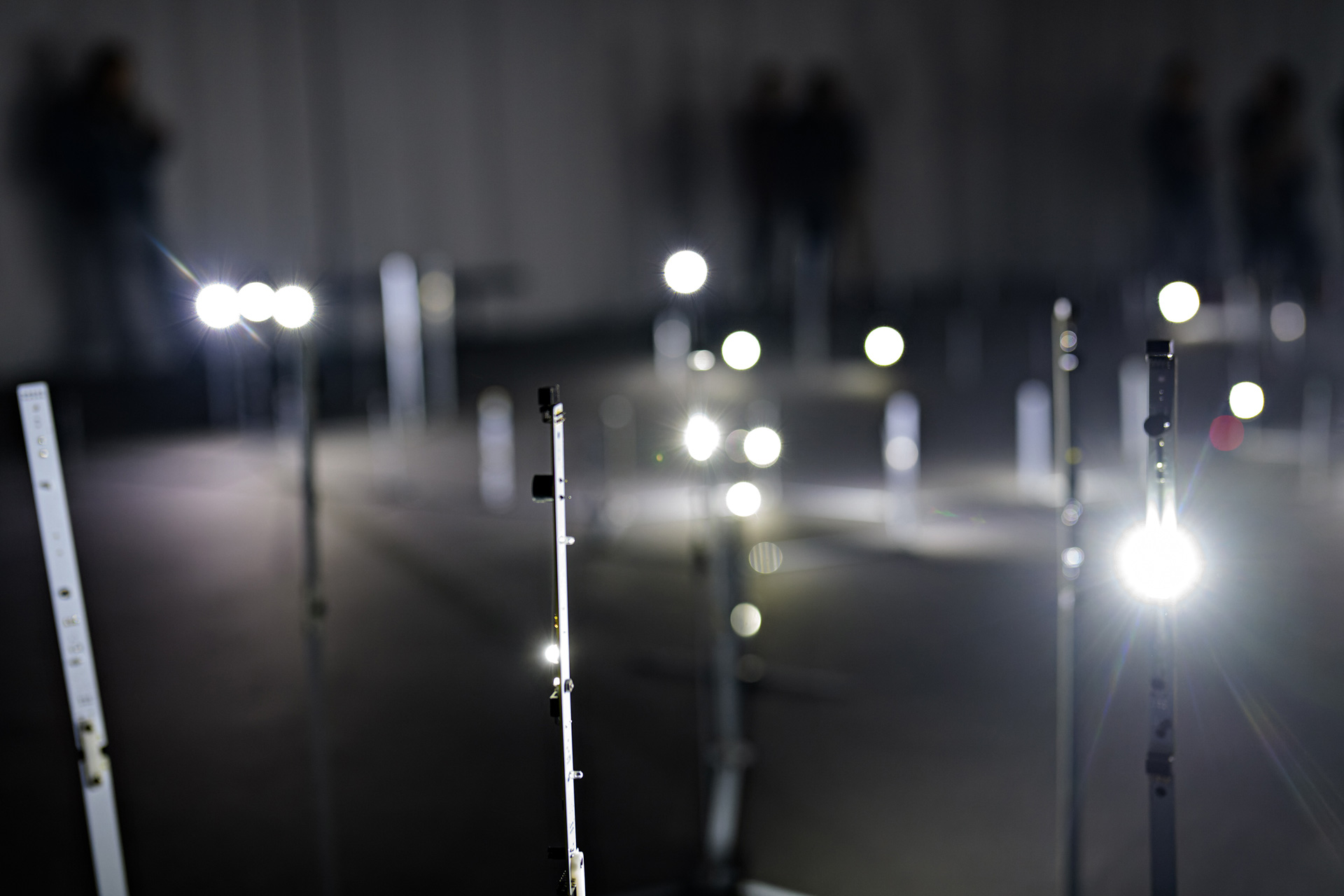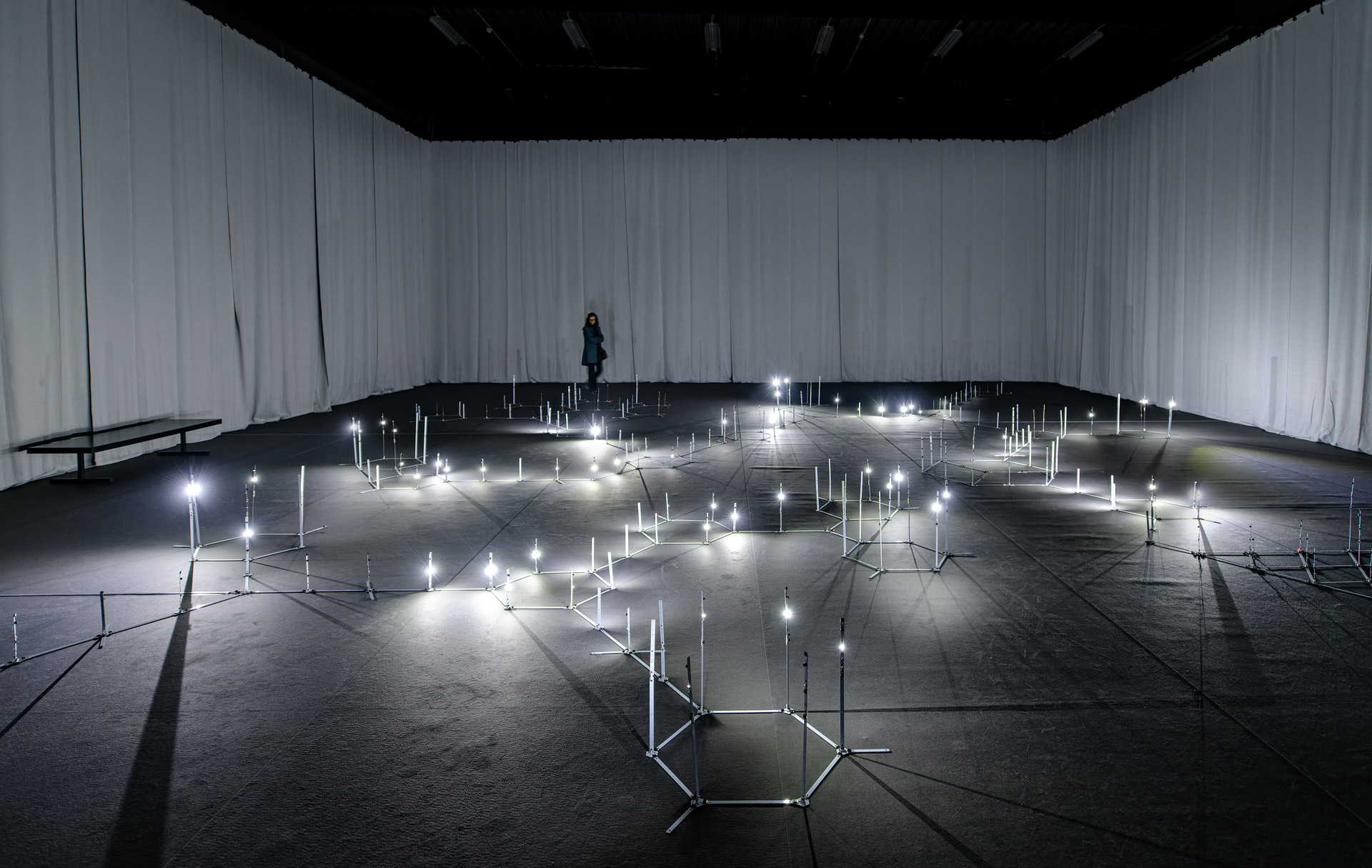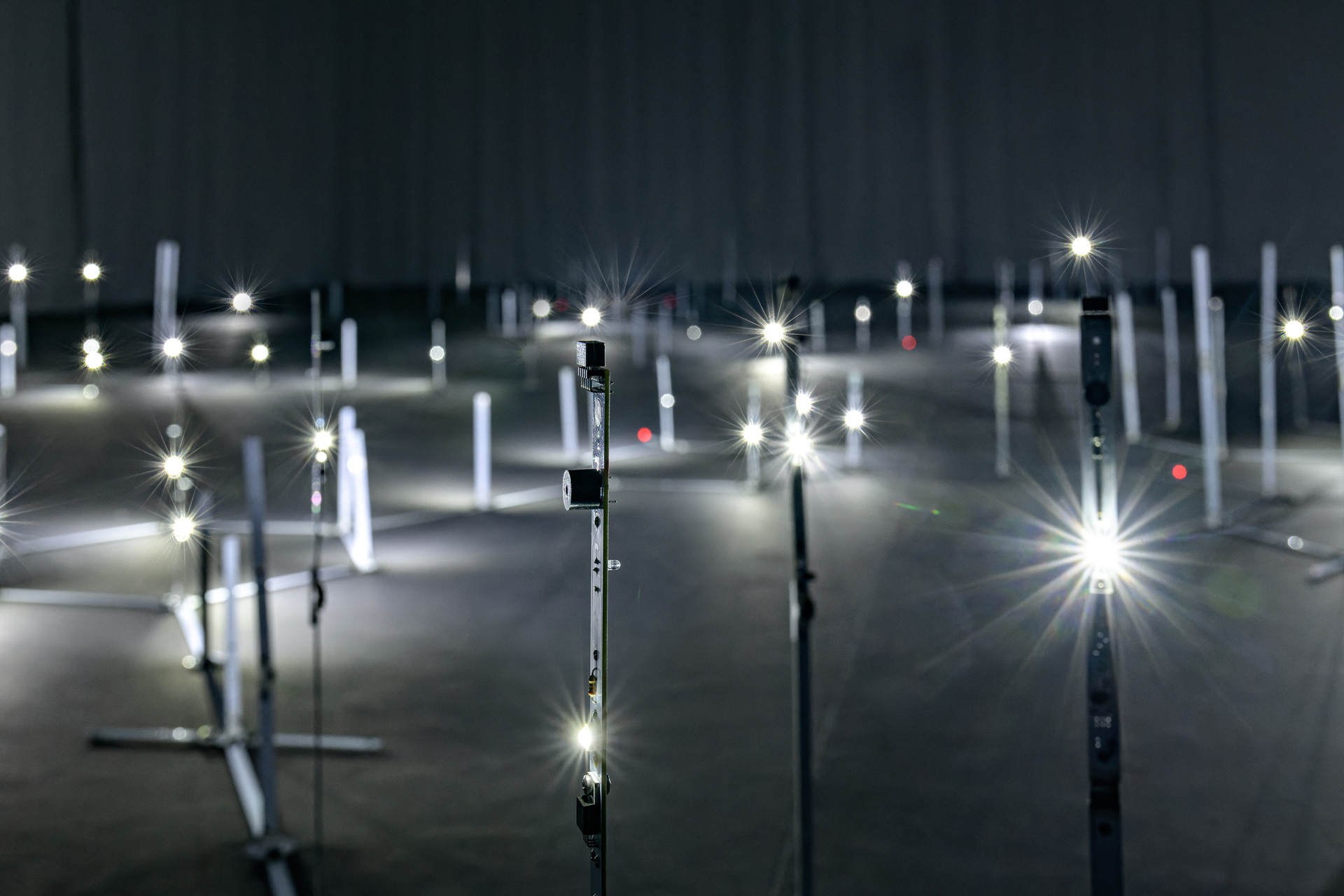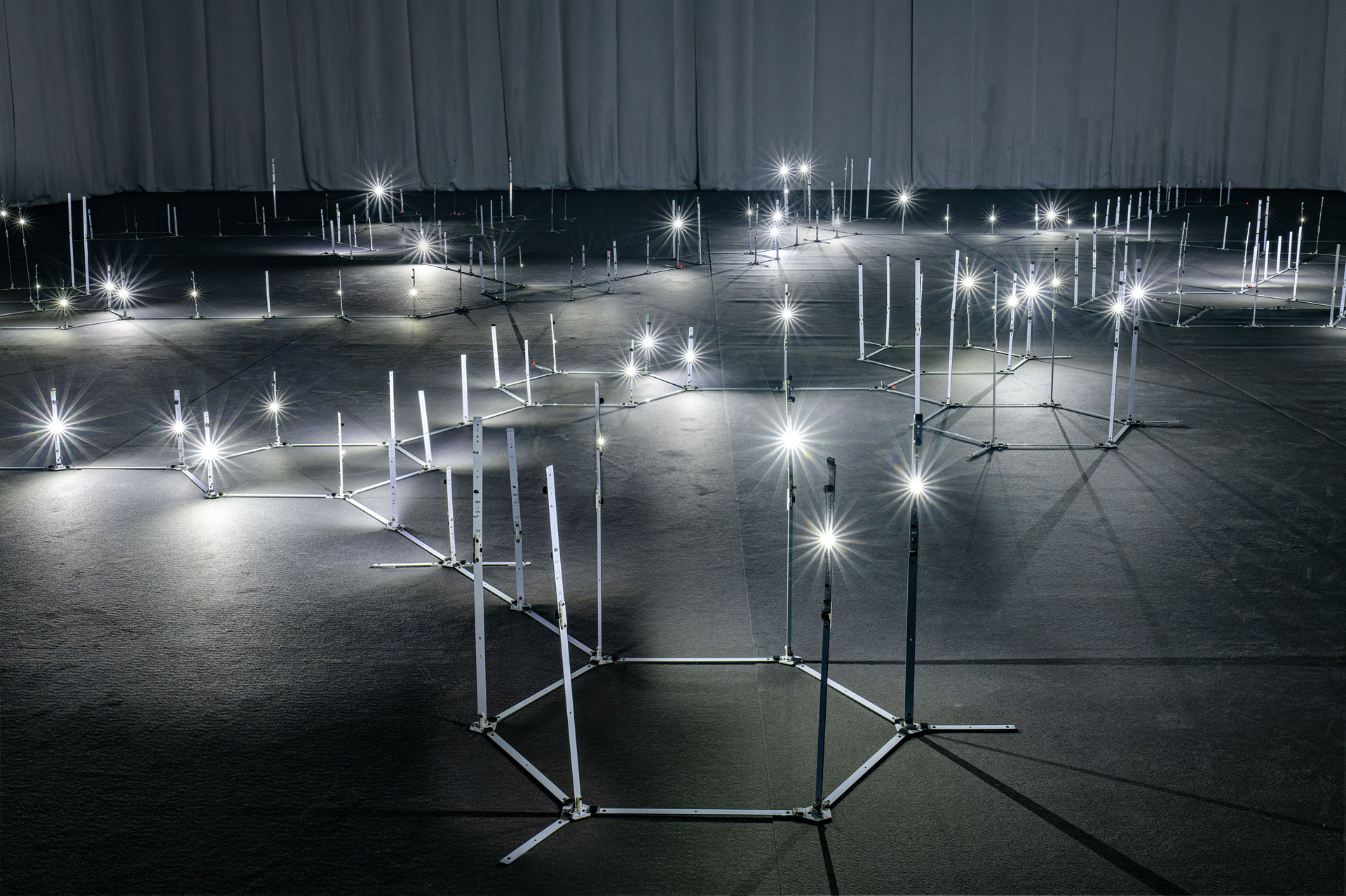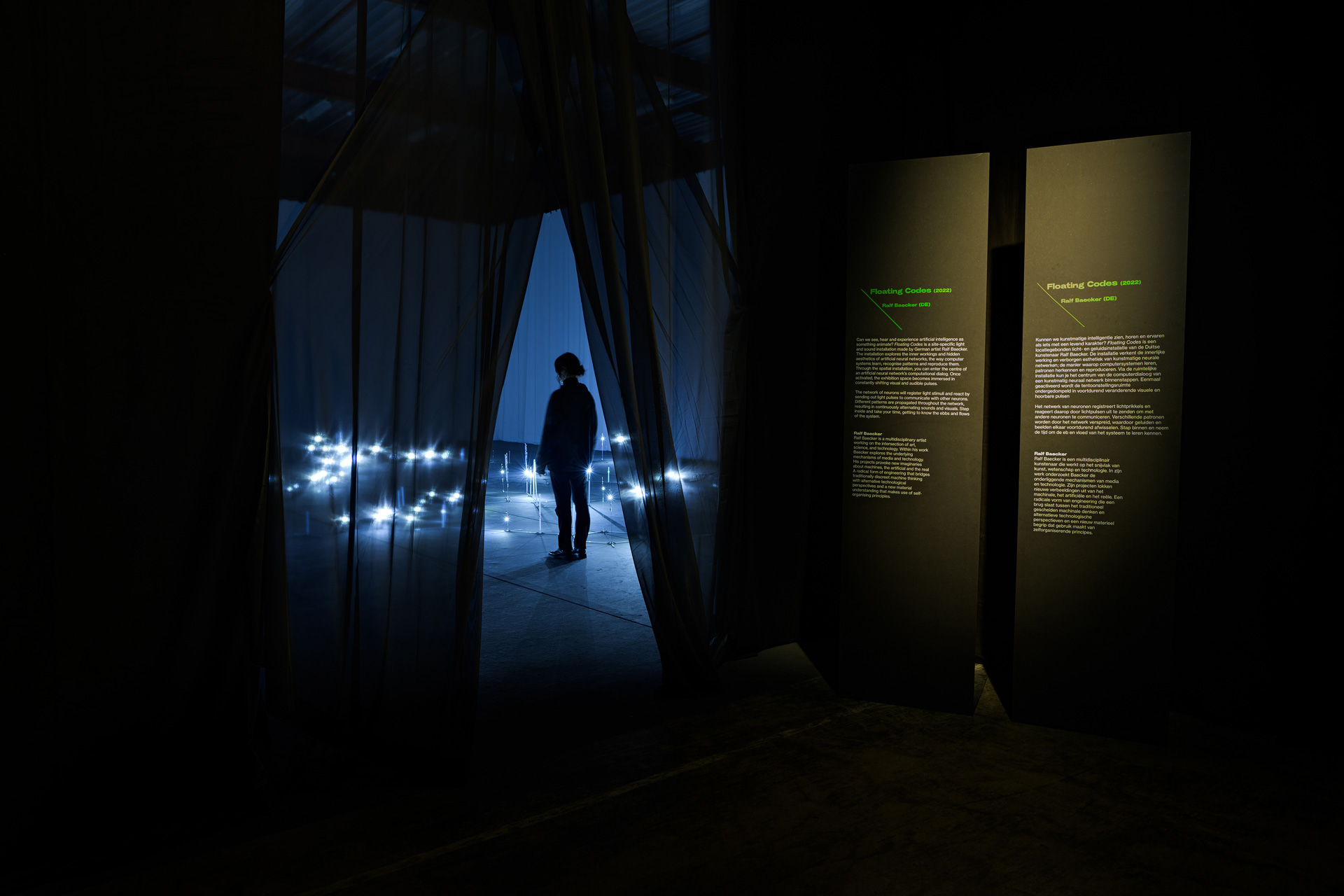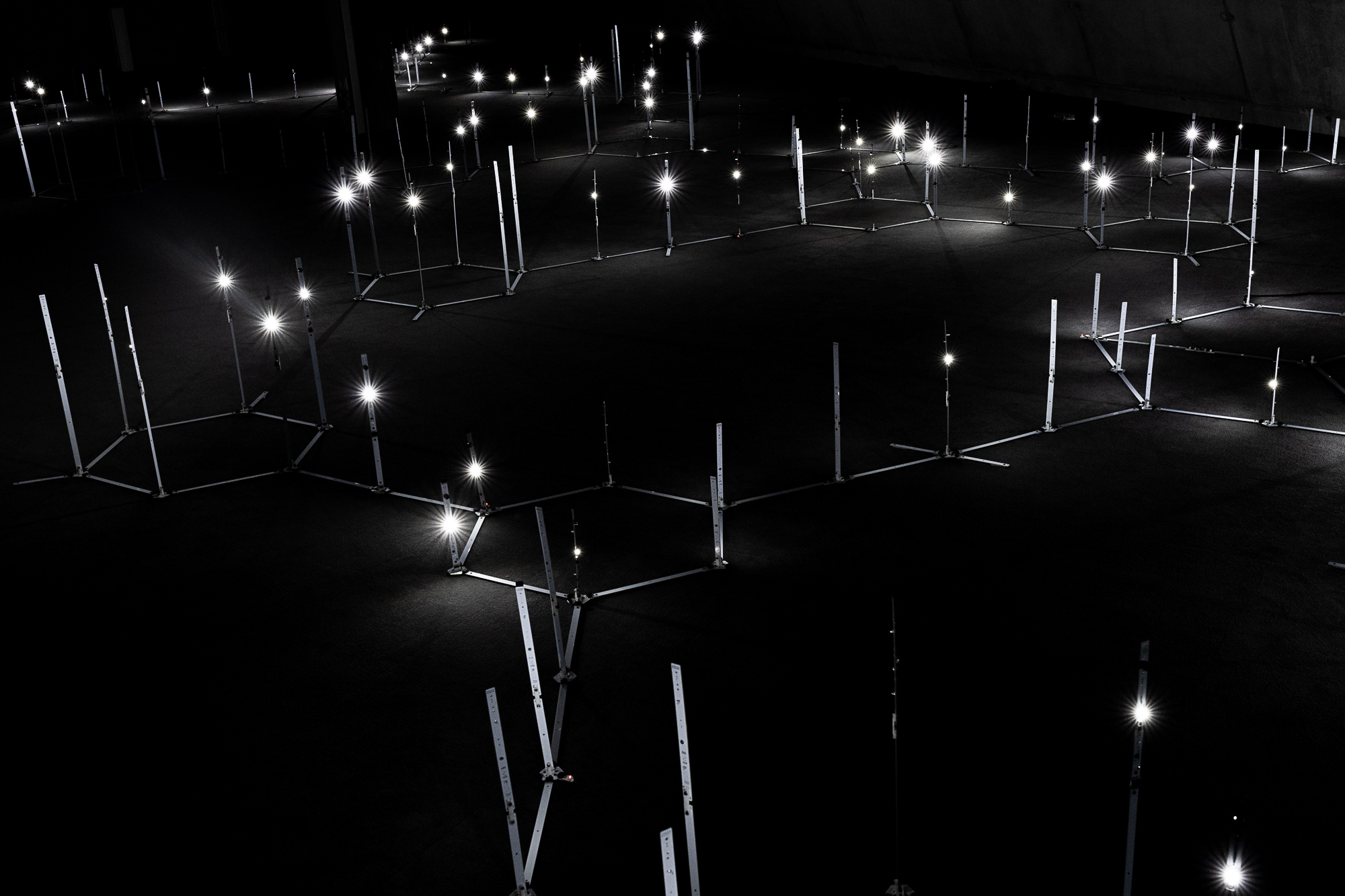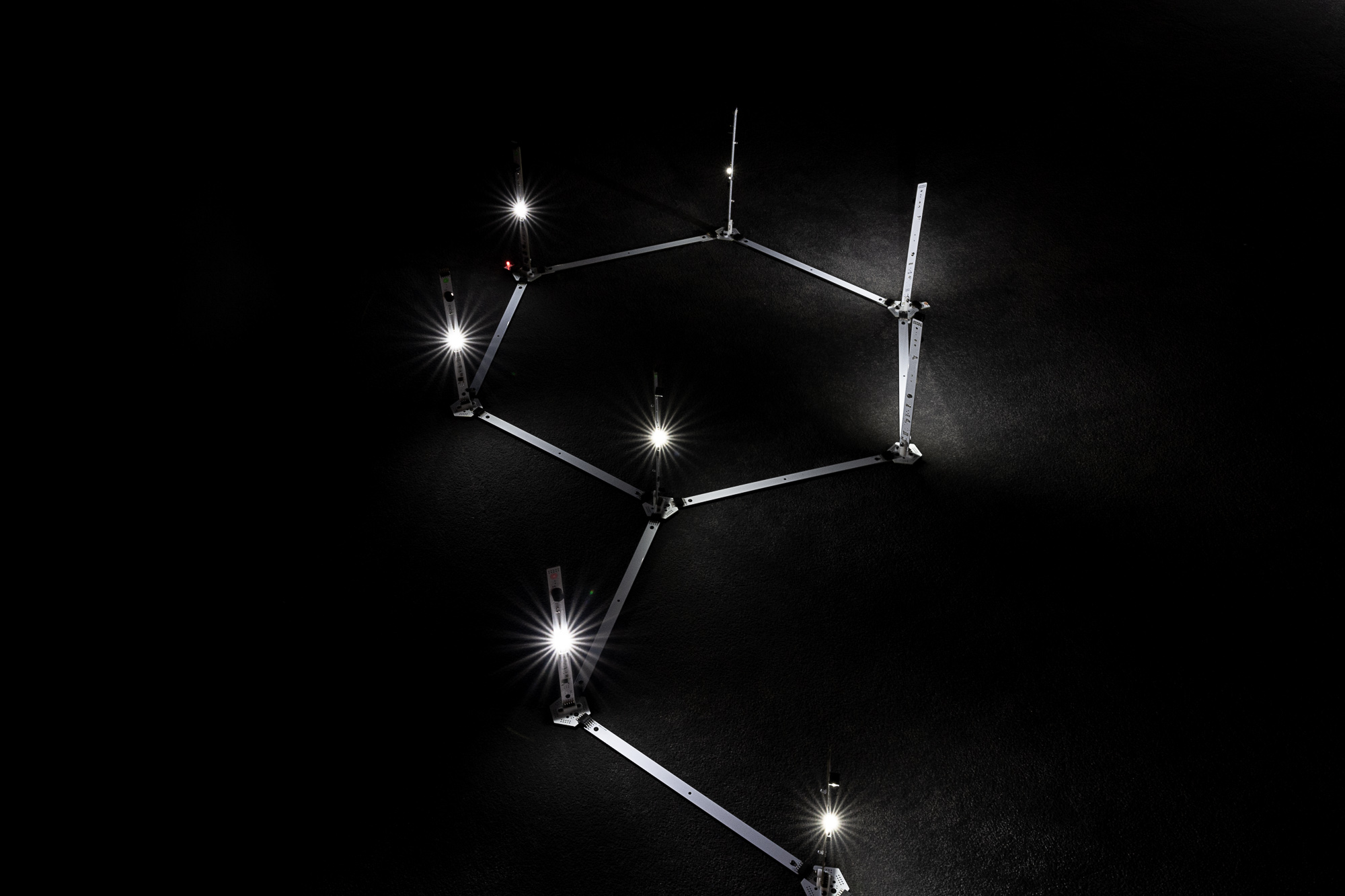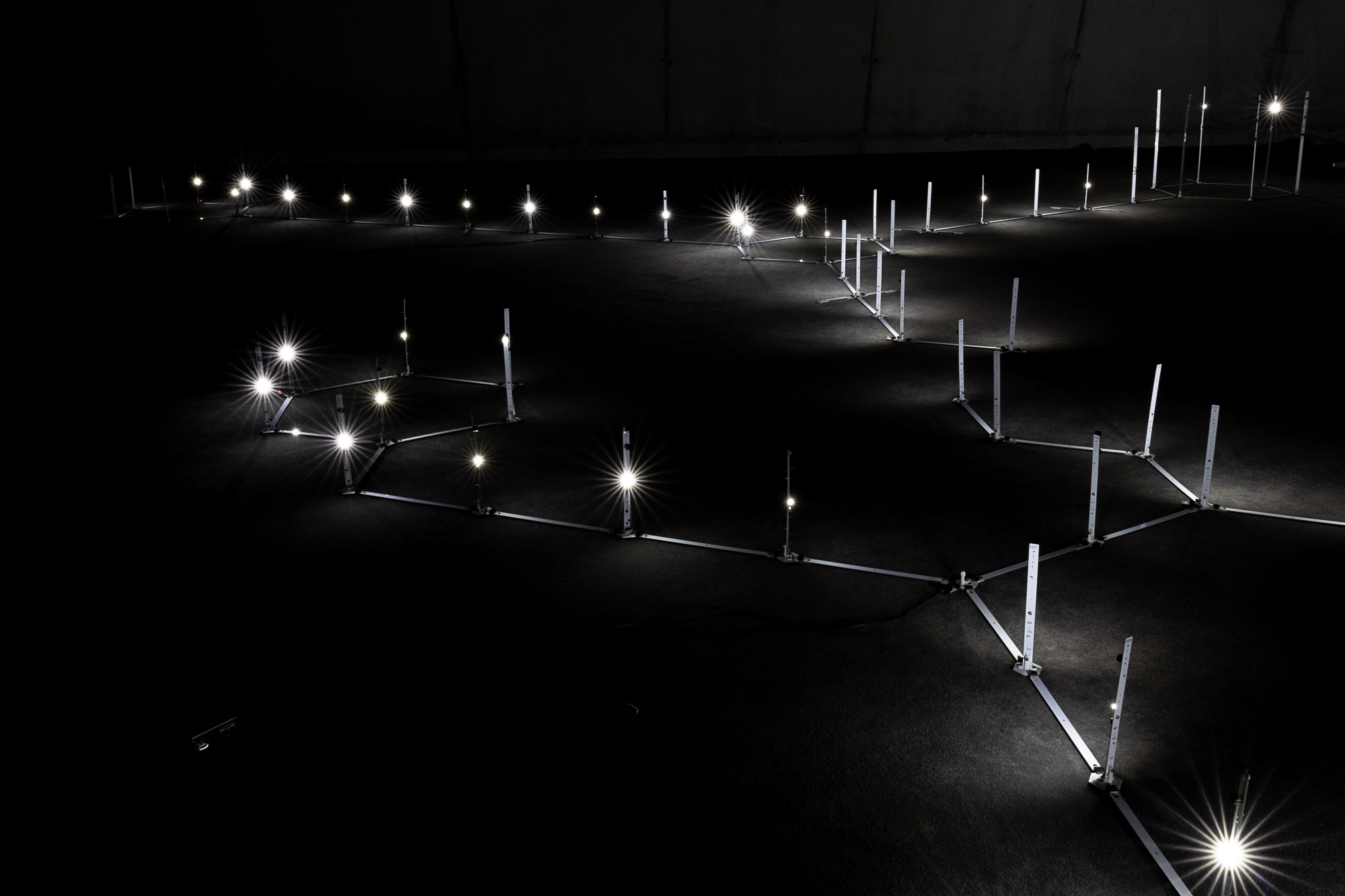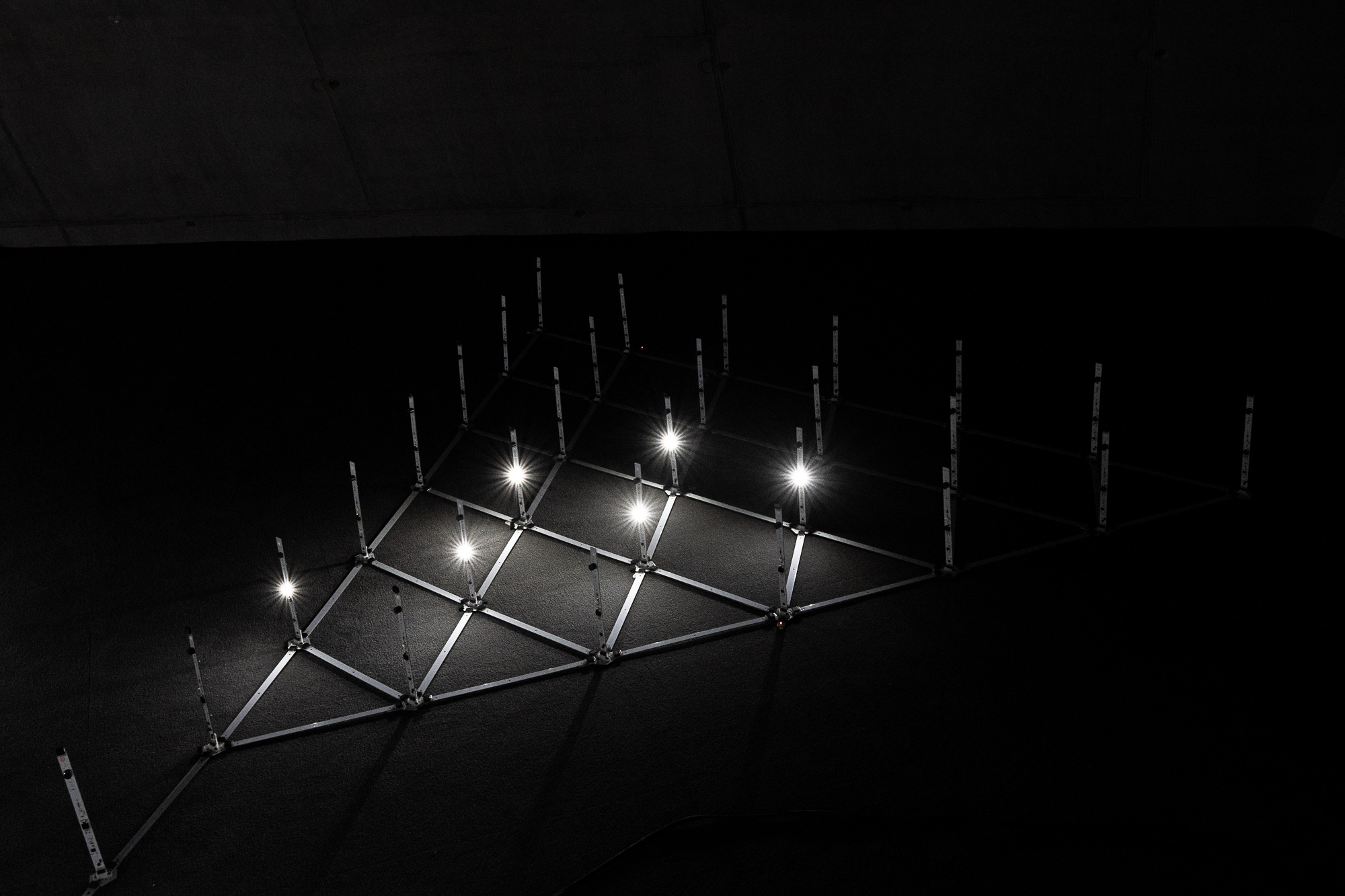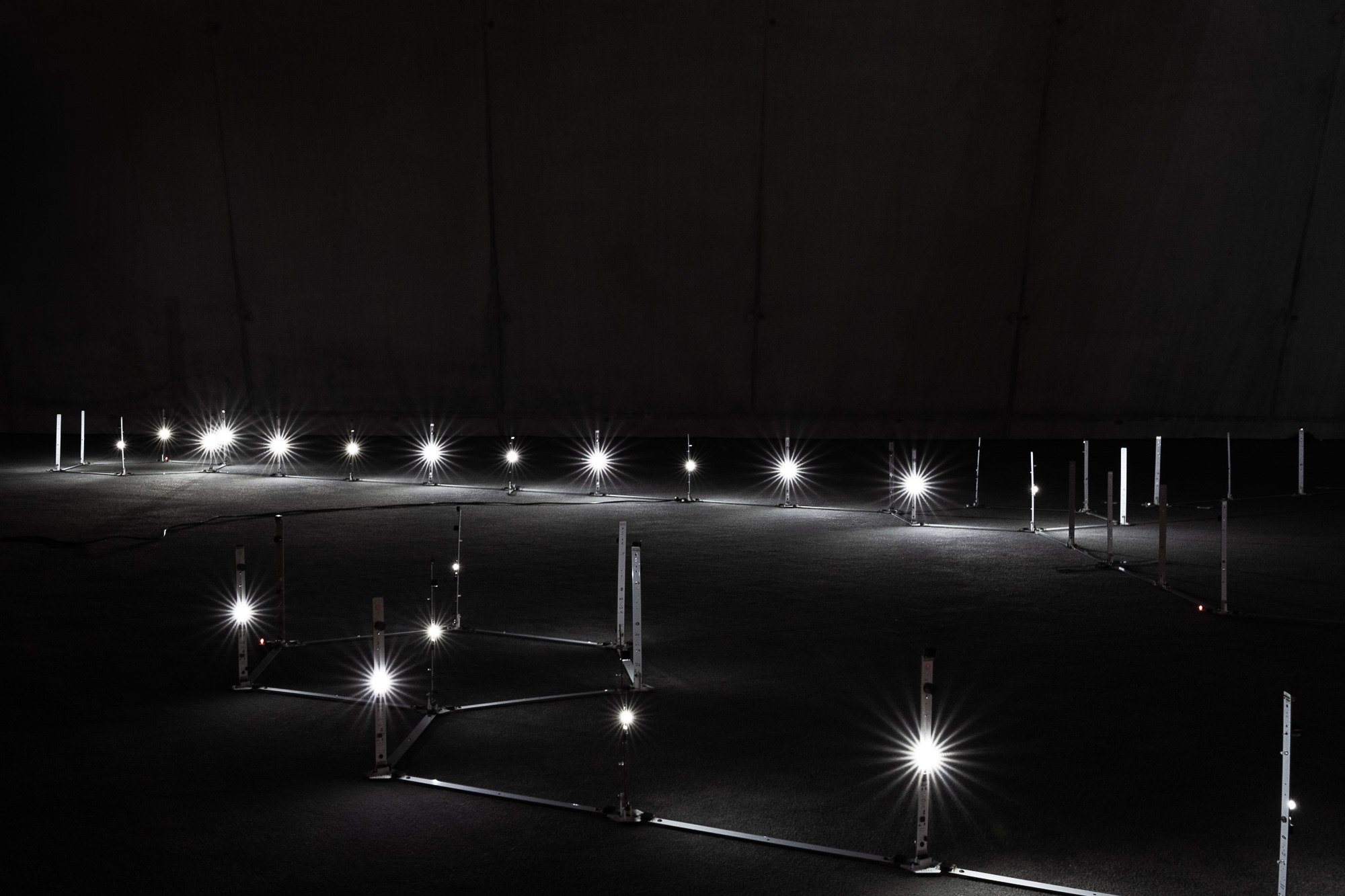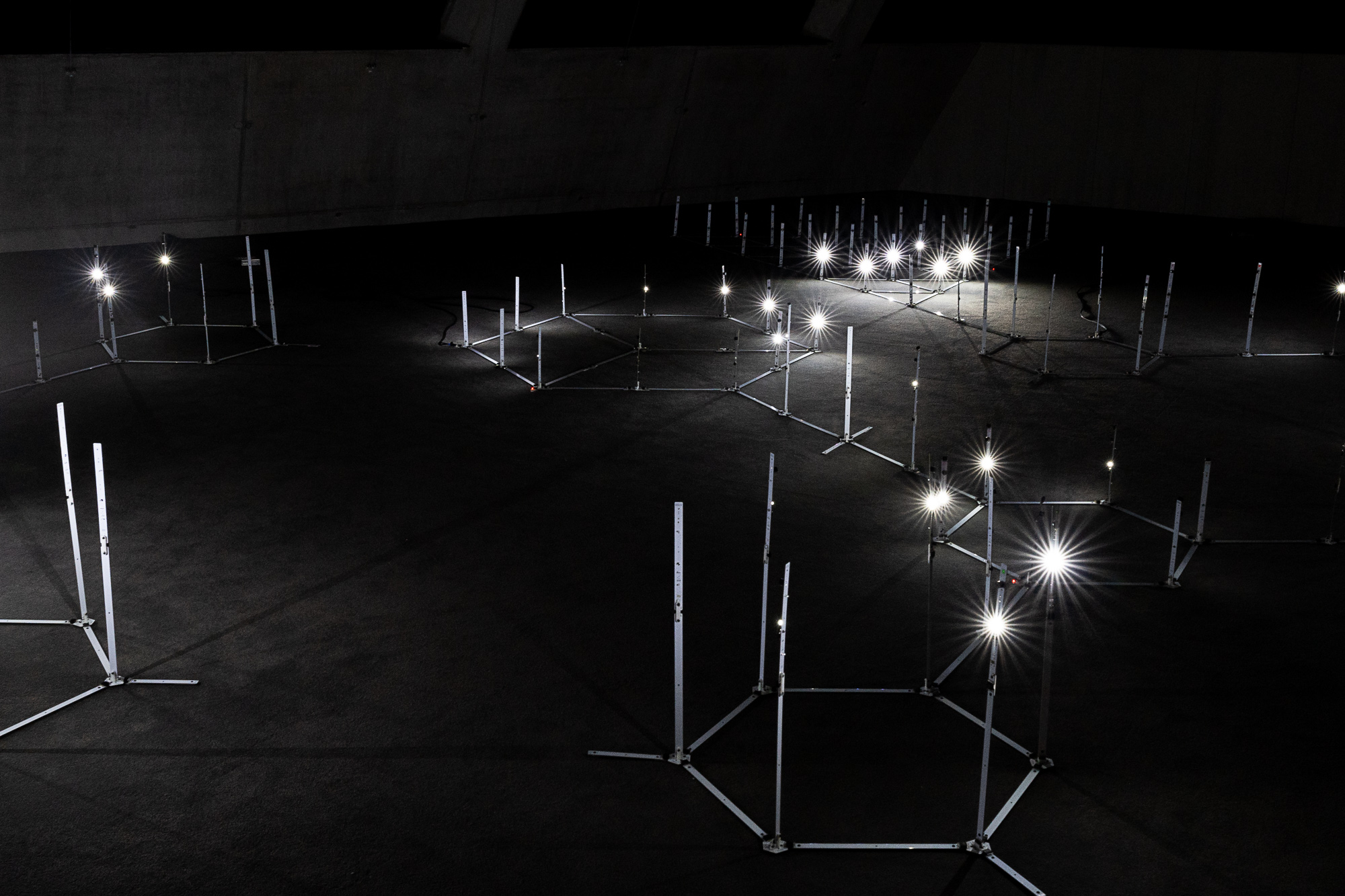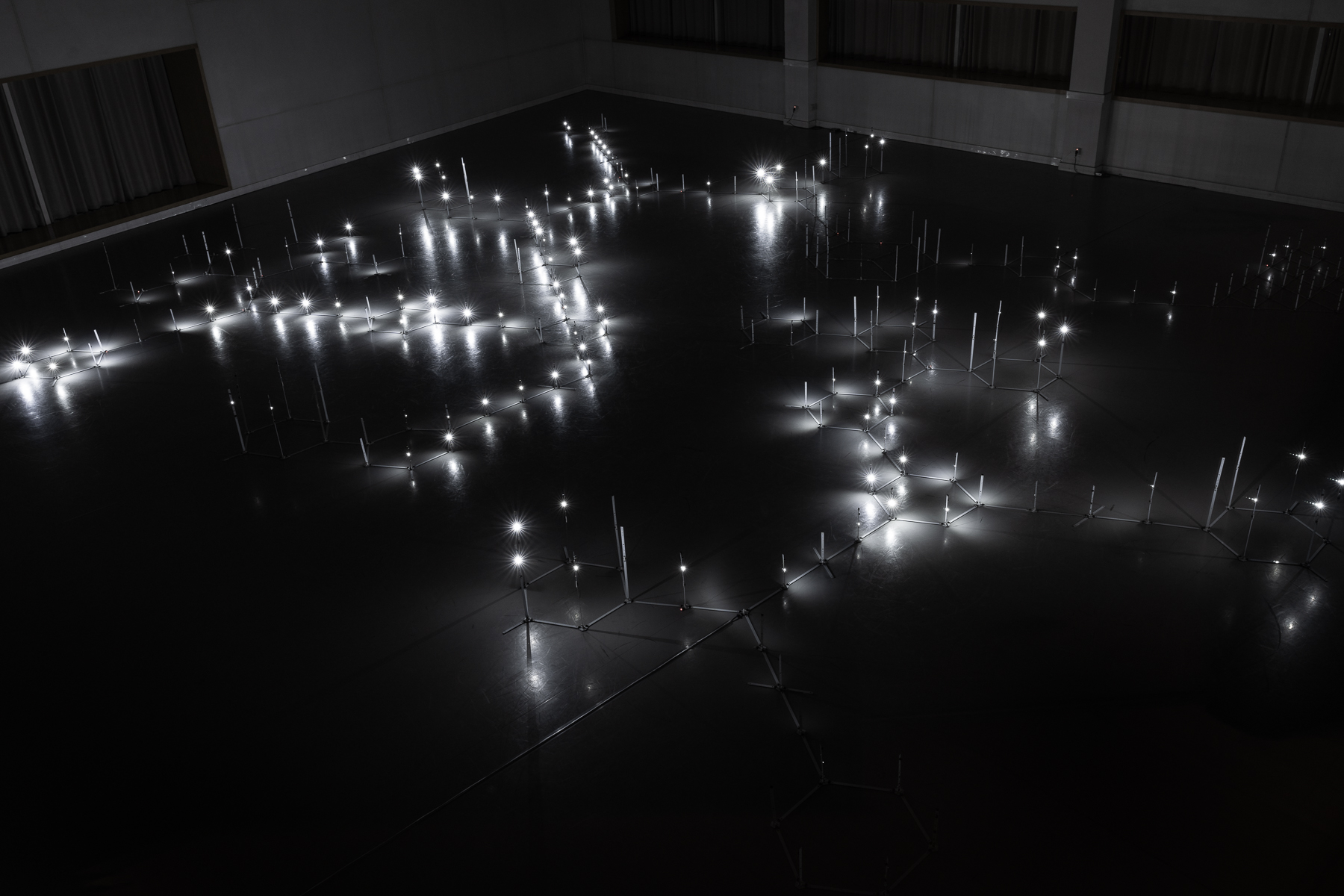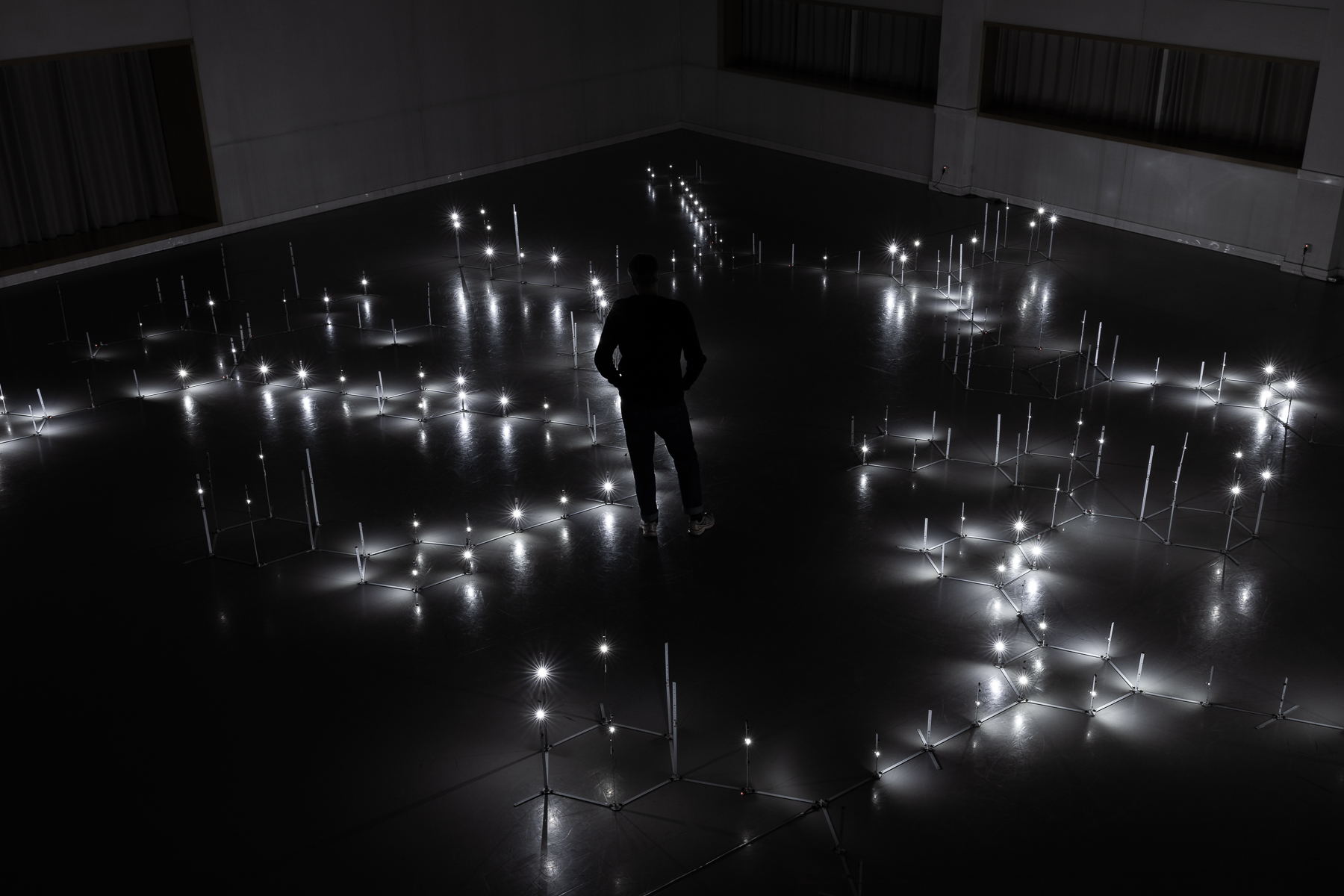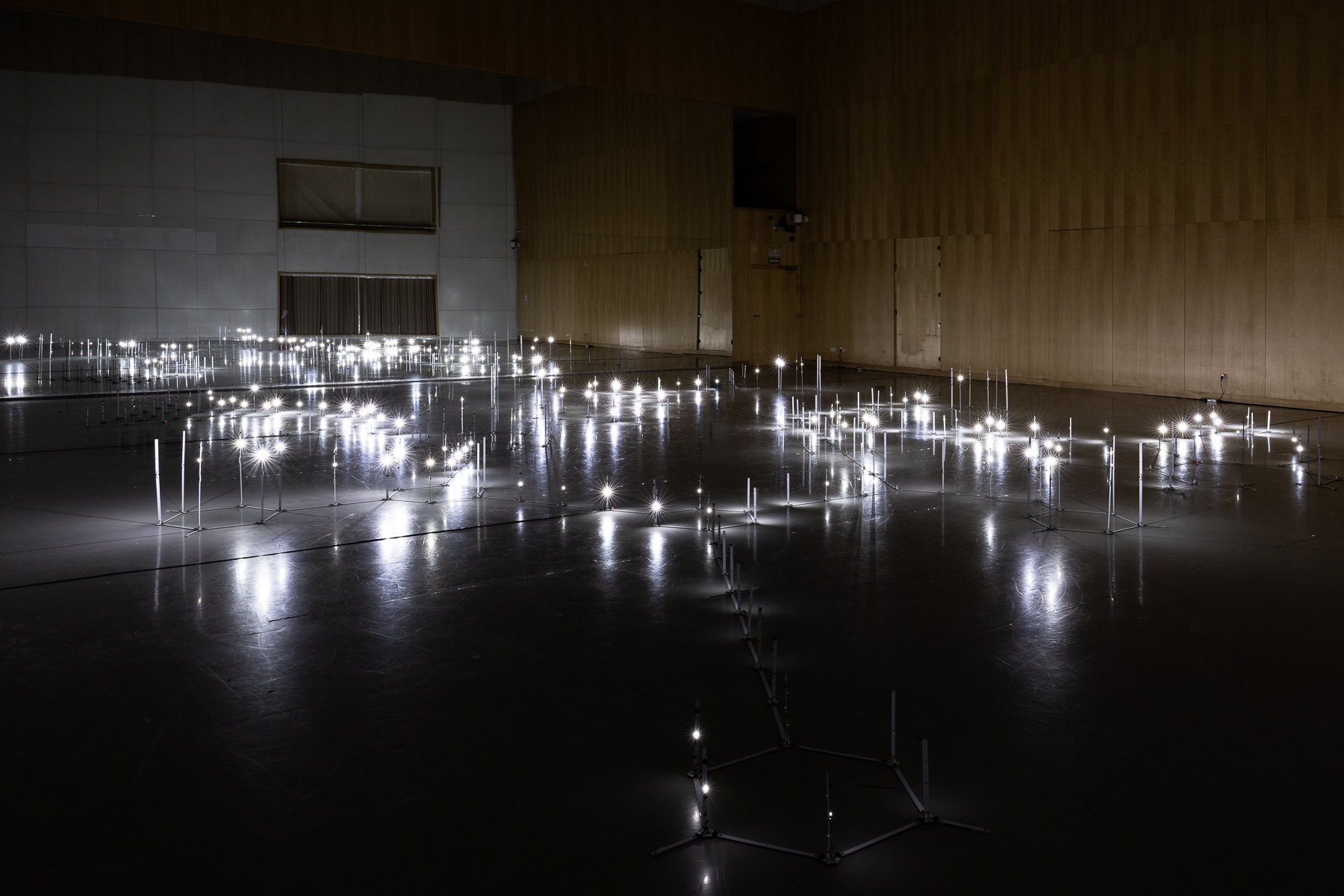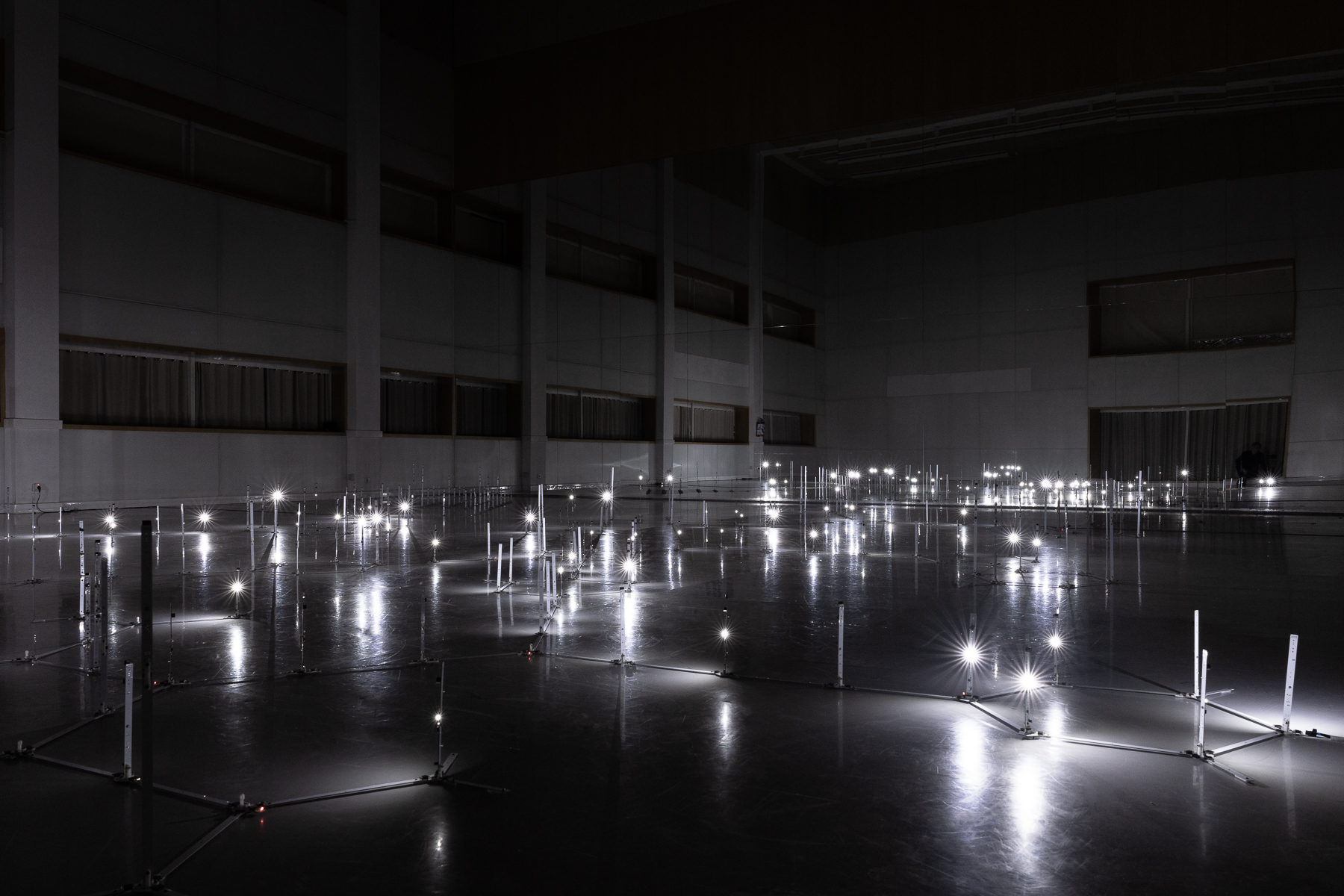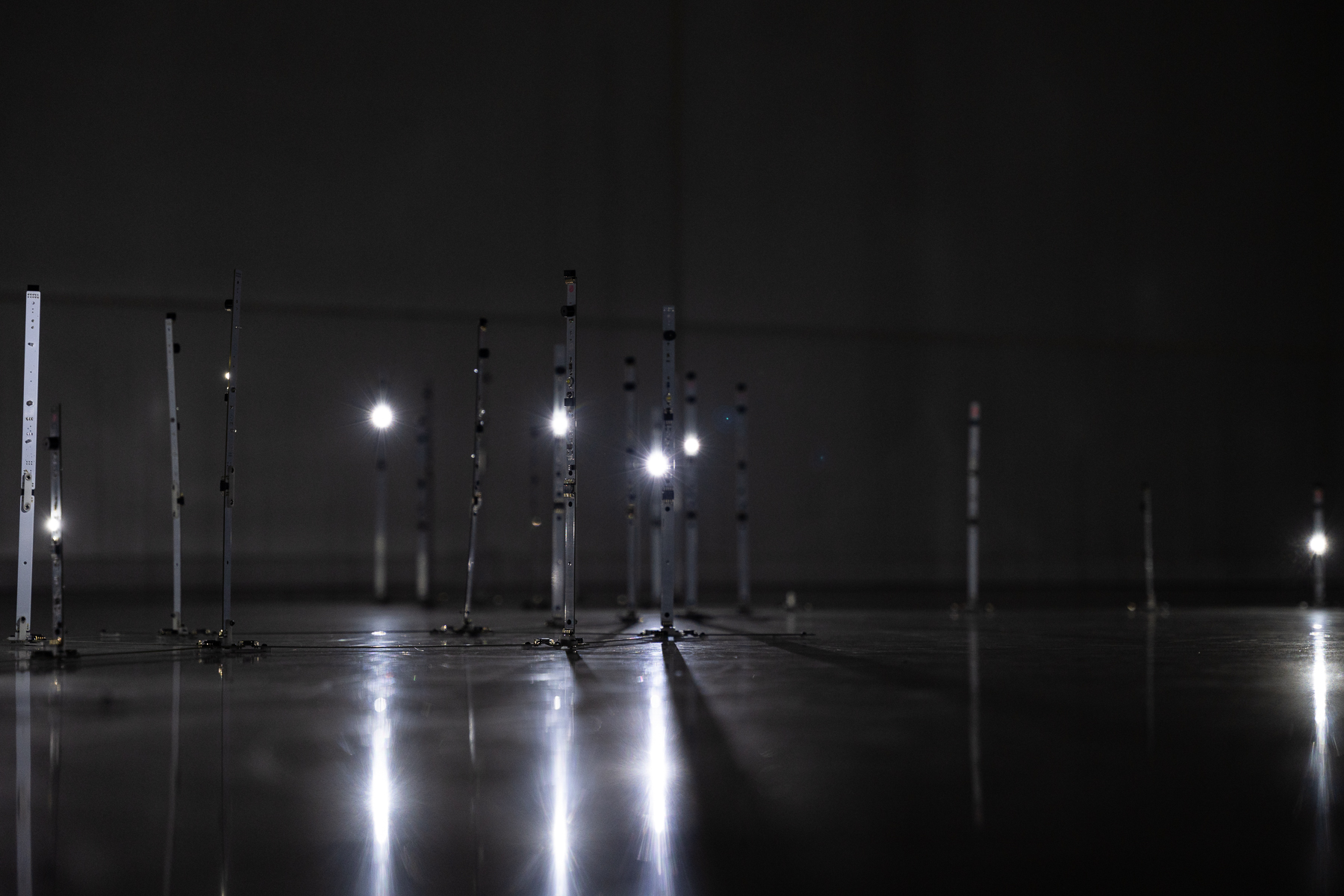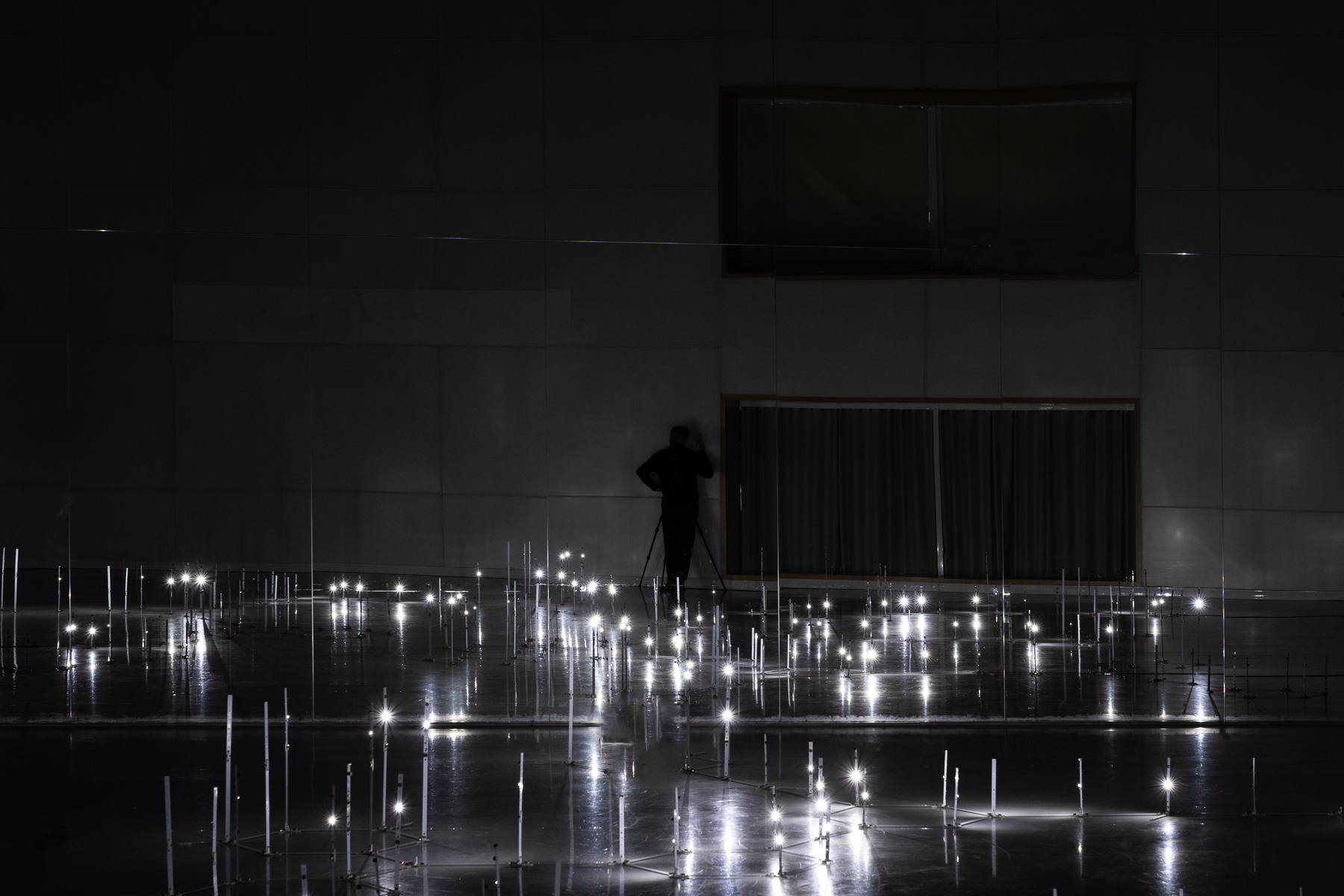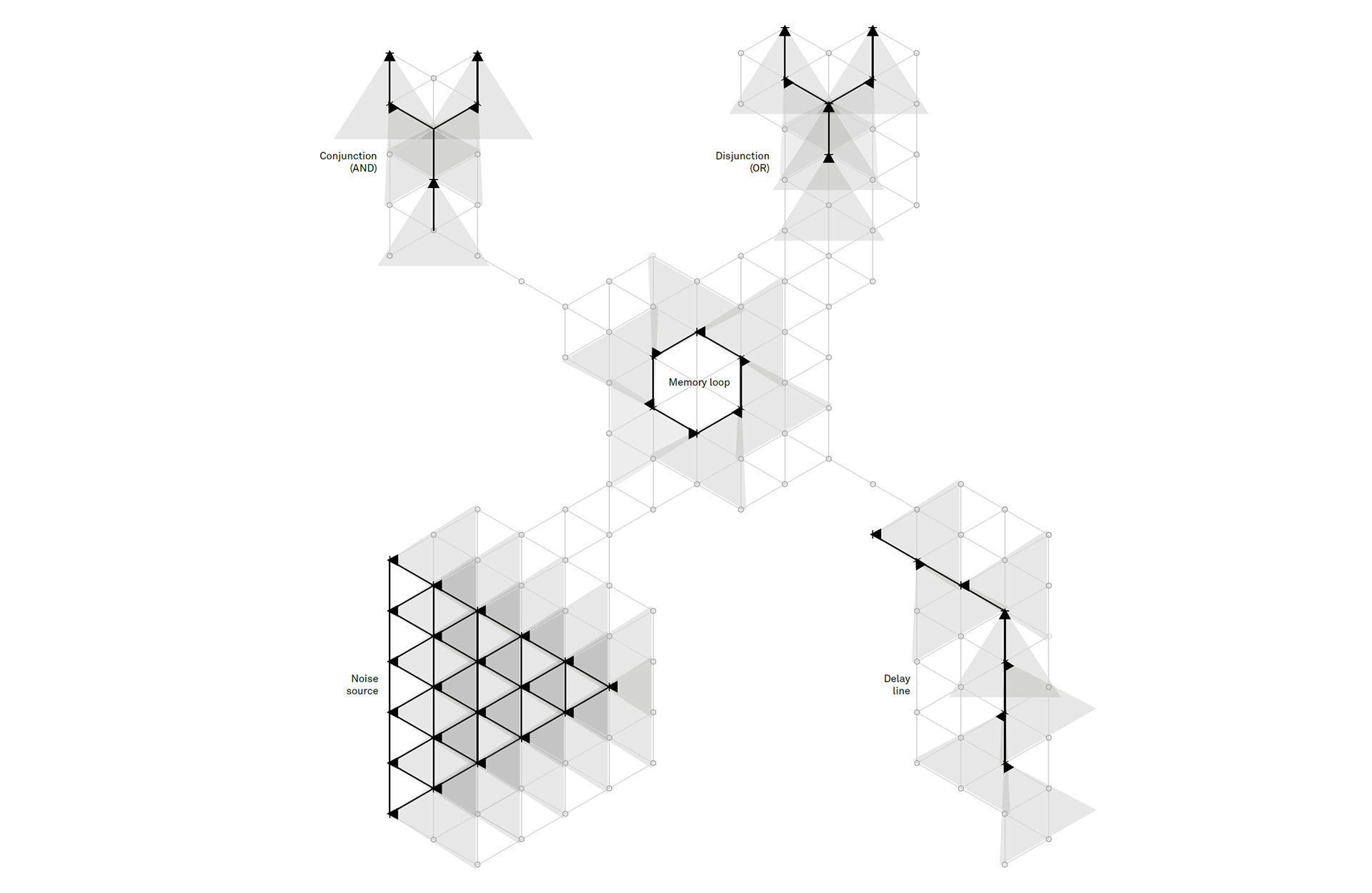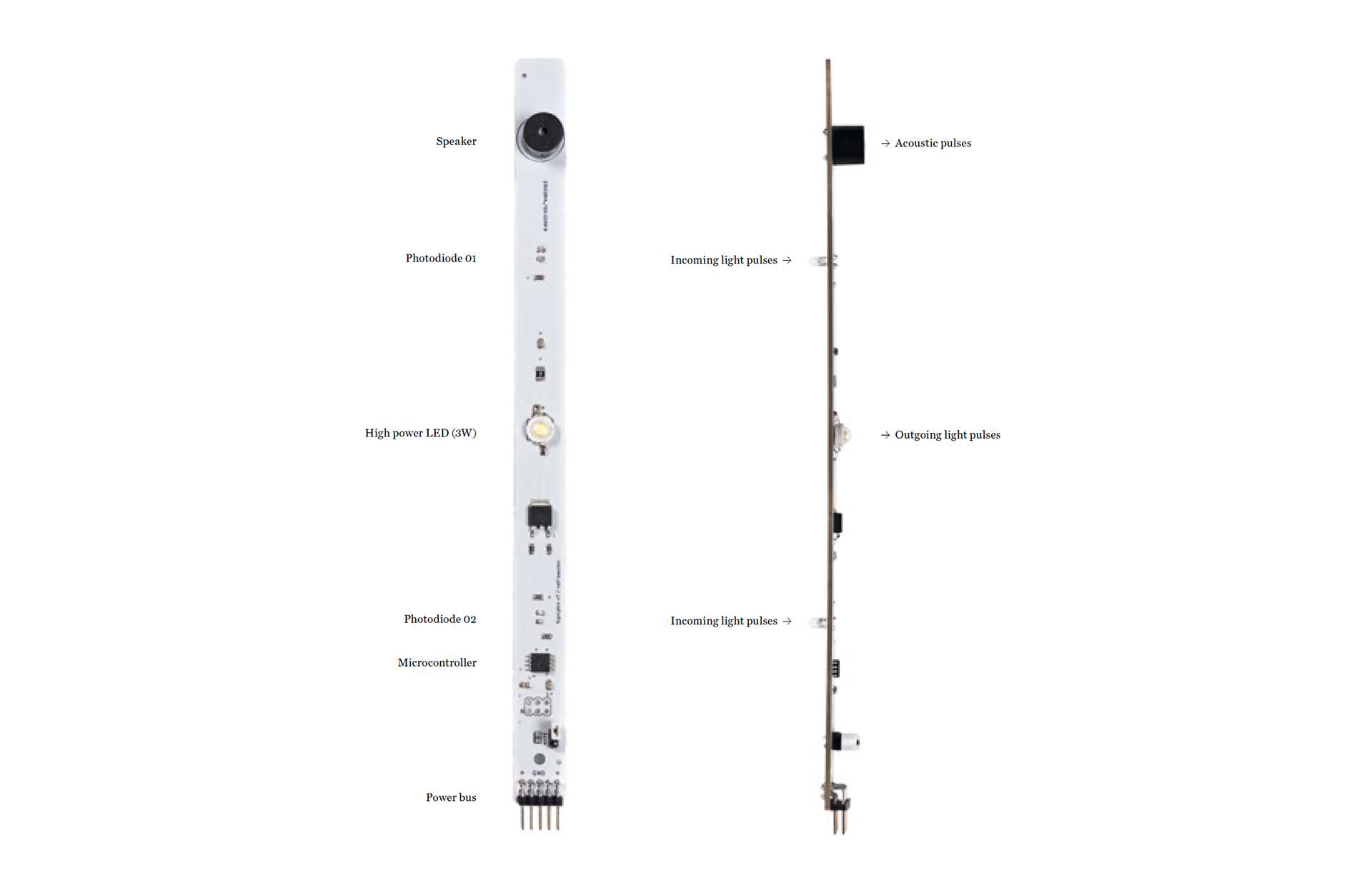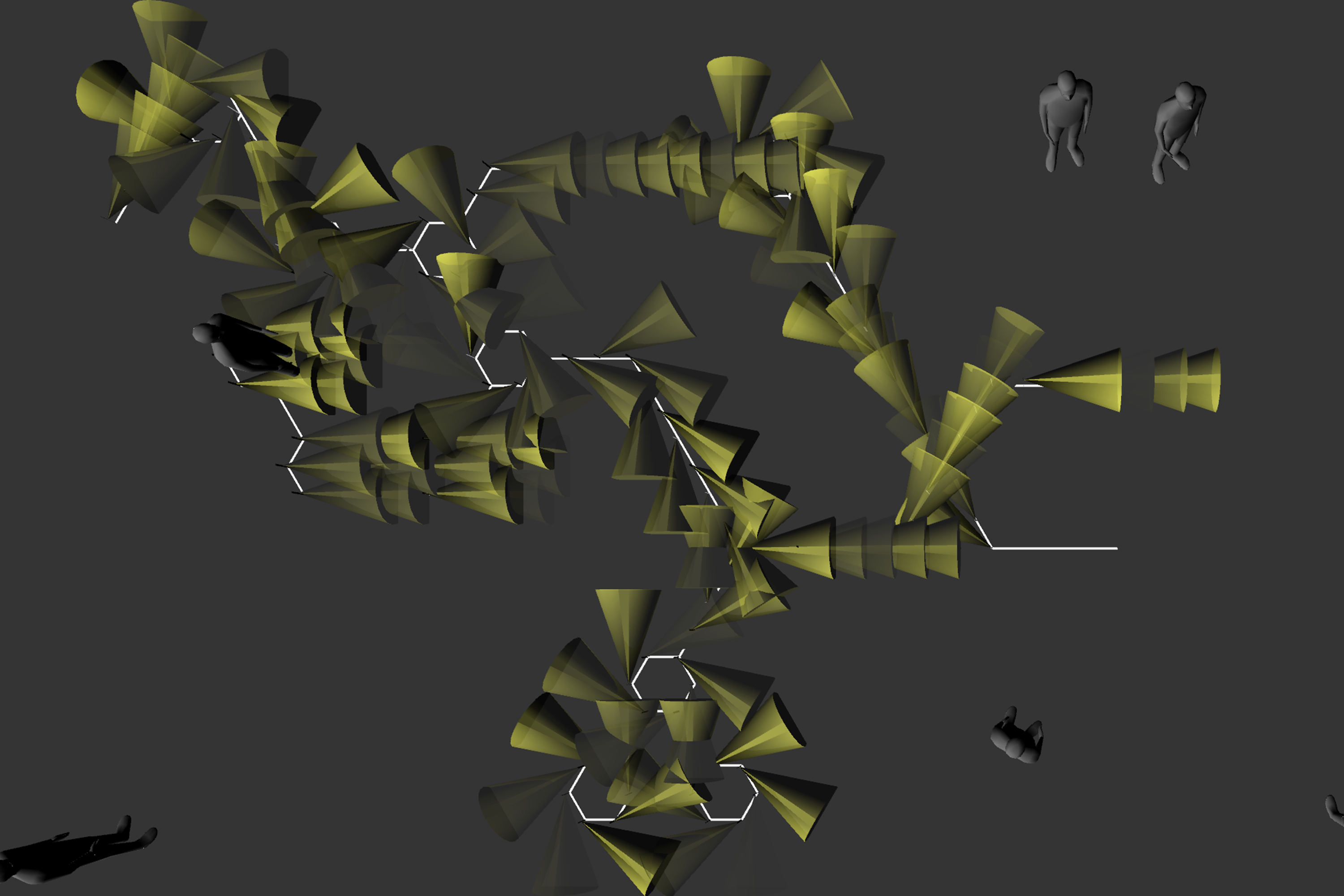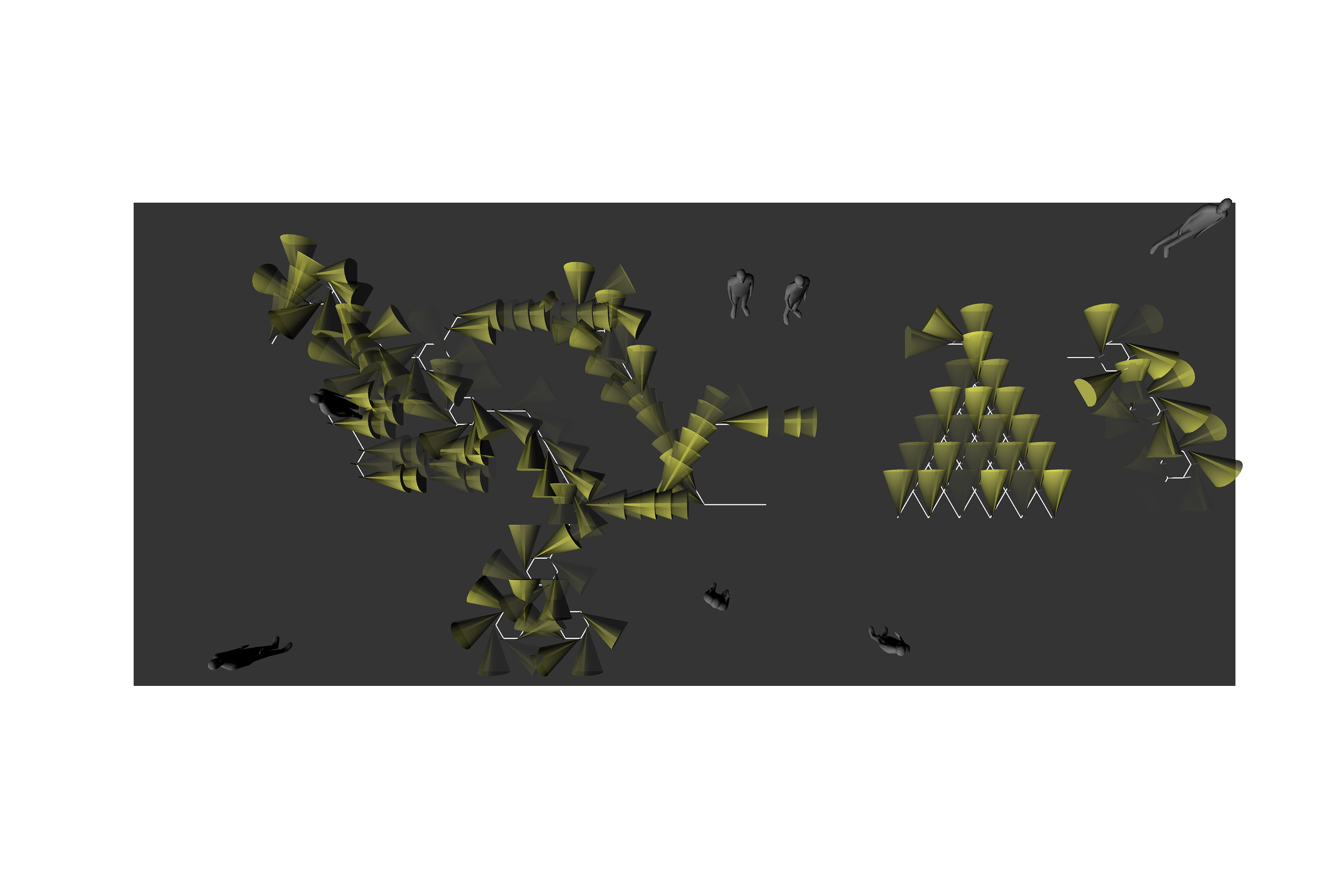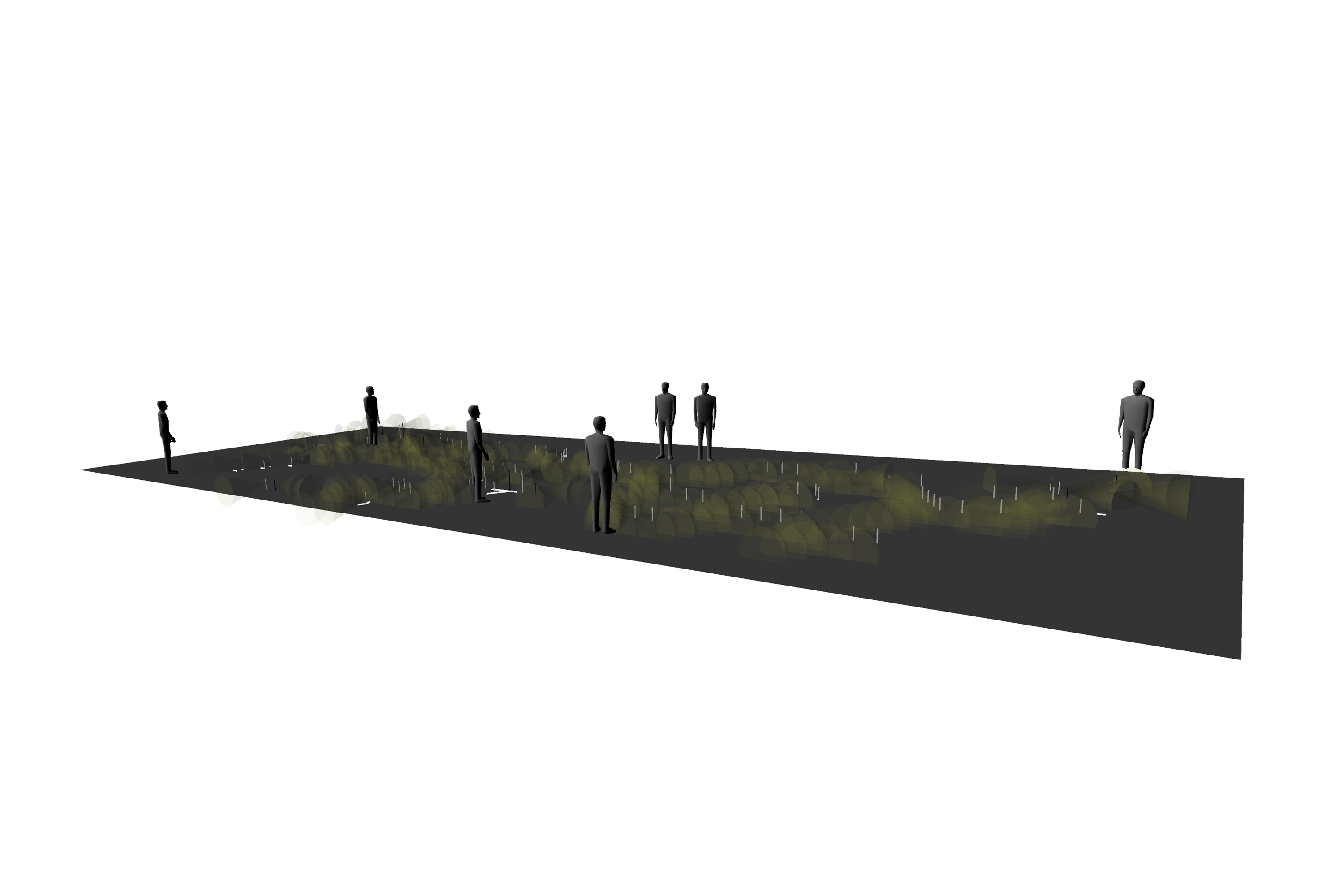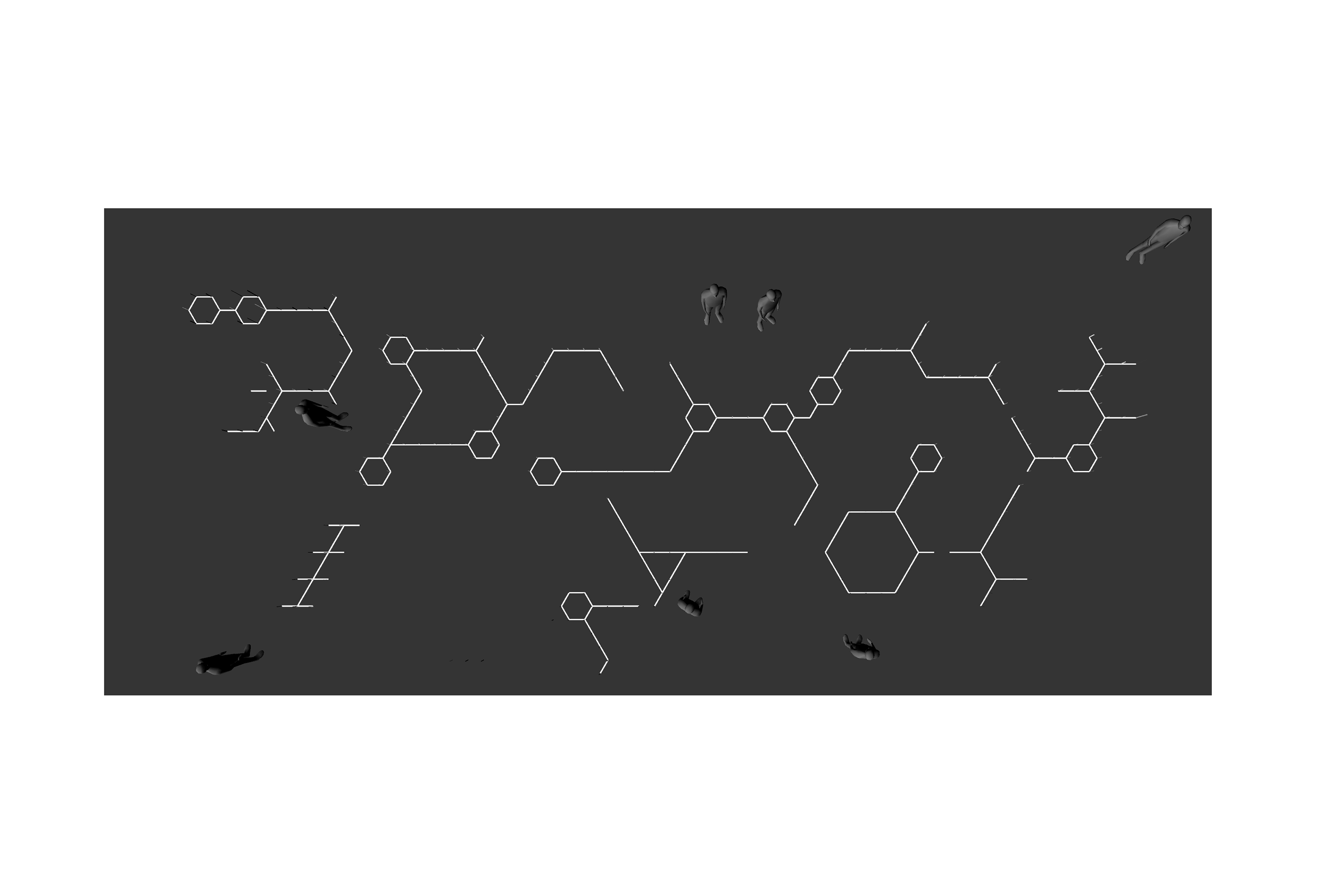Floating Codes is a site-specific light and sound installation that explores the inner workings and hidden aesthetics of artificial neural networks, the fundamental building blocks of machine learning systems. The exhibition space itself becomes an organism made of light and sound. Due to its open design, it is in constant exchange with its environment and visitors. The network consists of 250 custom-made artificial neurons (informed by McCulloch-Pitts perceptrons and concepts of cellular automata) arranged in a hexagonal topological grid. These neurons can register light stimuli and react by sending out light pulses to communicate with other neurons in the space. Codes and patterns are propagated throughout the network. Signals loop, mutate, feedback, and cancel themselves, resulting in a complex and continuously alternating visual and acoustic movement. The installation places visitors at the center of the artificial neural network’s computational dialog.
Depending on the network’s topology, different functions and behaviors constitute, for example, signal mutations, interlocking circles, feedback loops, memory-like elements, and random pattern generators. Each perceptron is equipped with two photosensors and a high-power LED, which casts sharp spots of light and shadows in the space. Additionally, the perceptrons are equipped with small speakers that indicate/sonificate the activities of each neuron. The core of every neuron is equipped with a small microcontroller that implements the behavior of the neural network, including self-adaptation to the environment.
Once the system is activated, the exhibition space becomes immersed in constantly shifting visual and audible pulses. In the visual domain, some kind of abstract shadow drawing will appear as the system’s flickering reaches a frequency spectrum beyond the threshold of human visual perception. The open and unsupervised system has no objective; its only goal is to maintain and conserve the propagating information in the network.
Floating Codes’ modular grid structure is based entirely on manufactured printed circuit boards (PCB), including the neurons themselves, connective elements, extensions, and hexagonal hub. The PCBs are connected via standard pin header connectors. This structure makes the system variable and open.
Materials:
Custom electronics, custom circuit boards (PCB), microcontroller, high power LED, speaker, power supplies
Credits:
Assistance: Timo Johannes, Juan Luque Valbuena and Felix Fisgus
Exhibitions/Performances:
Floating Codes (upcoming) (solo)
2024-11-07 - 2024-11-29
KONTEJNER | bureau of contemporary art praxis, Zagreb HR
From the Past we Love, To the Future we Need - Festival X
2023-10-06 - 2023-10-08
Alserkal Avenue, Dubai UE
Fragments - FIBER Festival 2023
2023-05-11 - 2023-05-15
Door Open Space, Amsterdam NL
Máquina Orgánica
2023-03-23 - 2023-04-23
Teatros del Canal de la Comunidad de Madrid, Madrid ES
Ars Electronica - STUDIO(dys)TOPIA – At the Peak of Humankind
2022-09-07 - 2022-09-11
Ars Electronica, Linz AT
